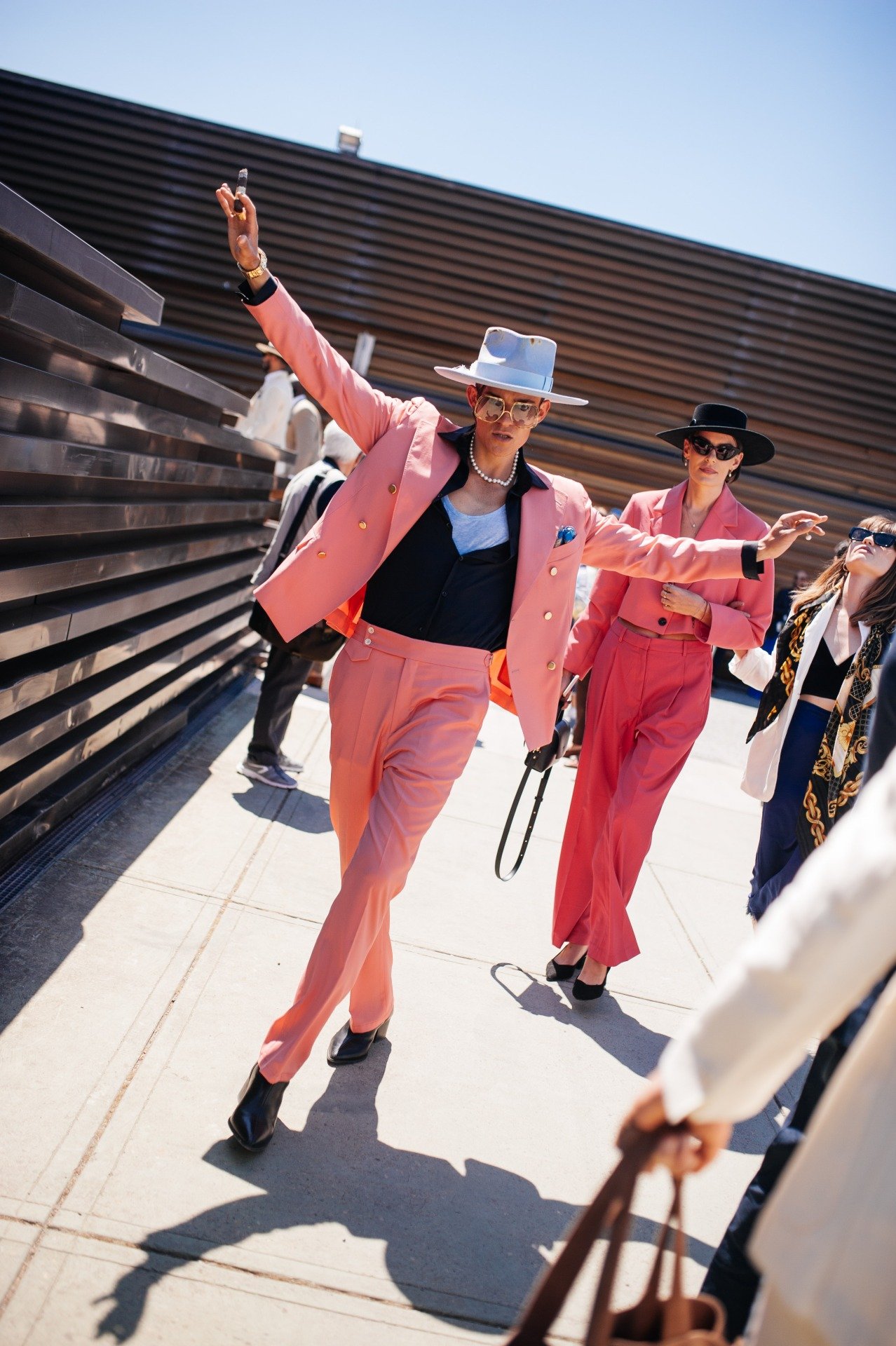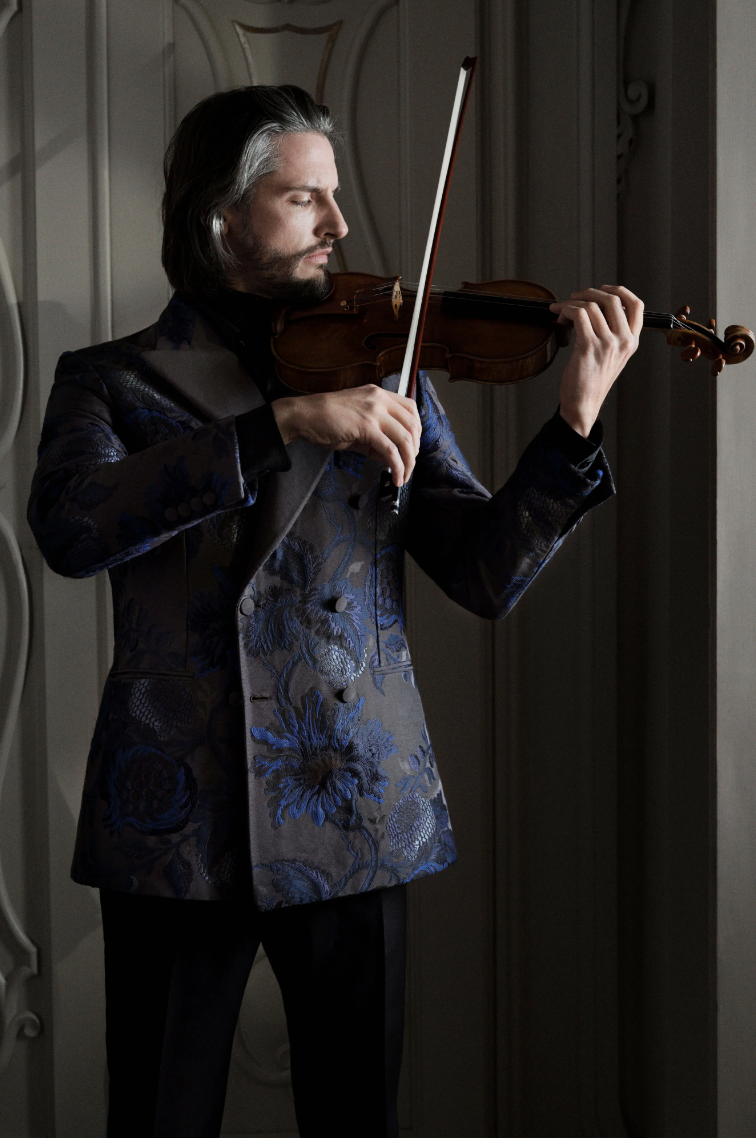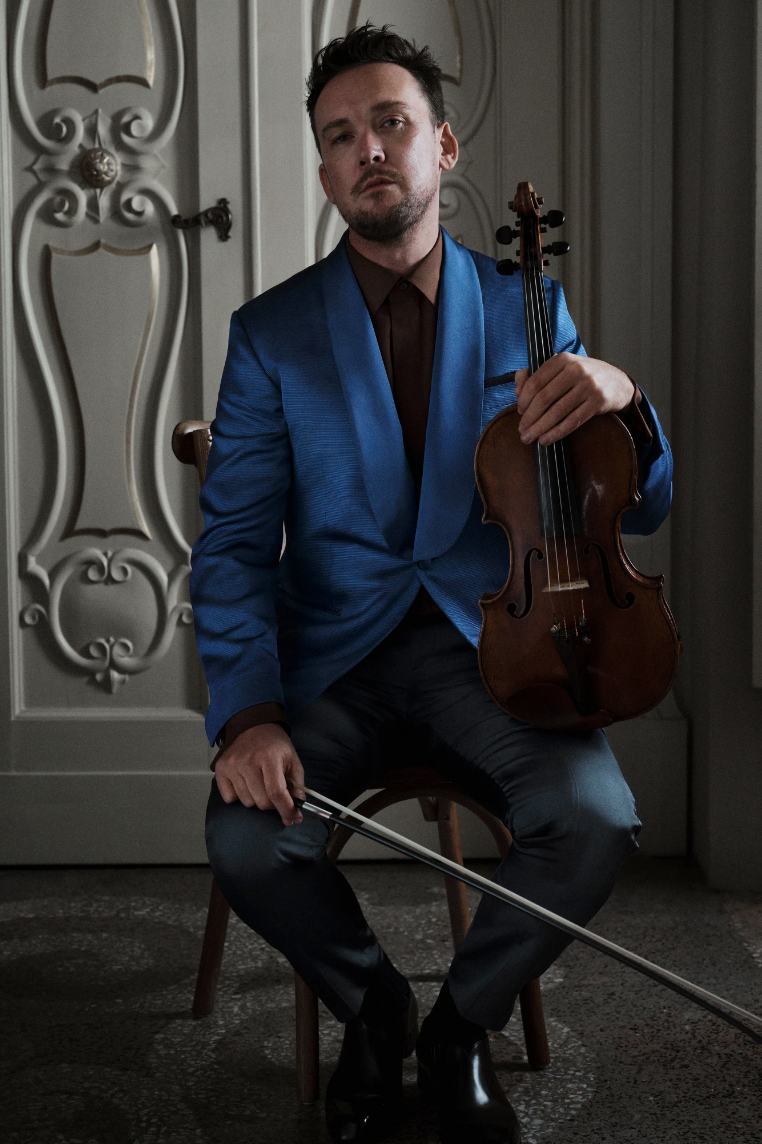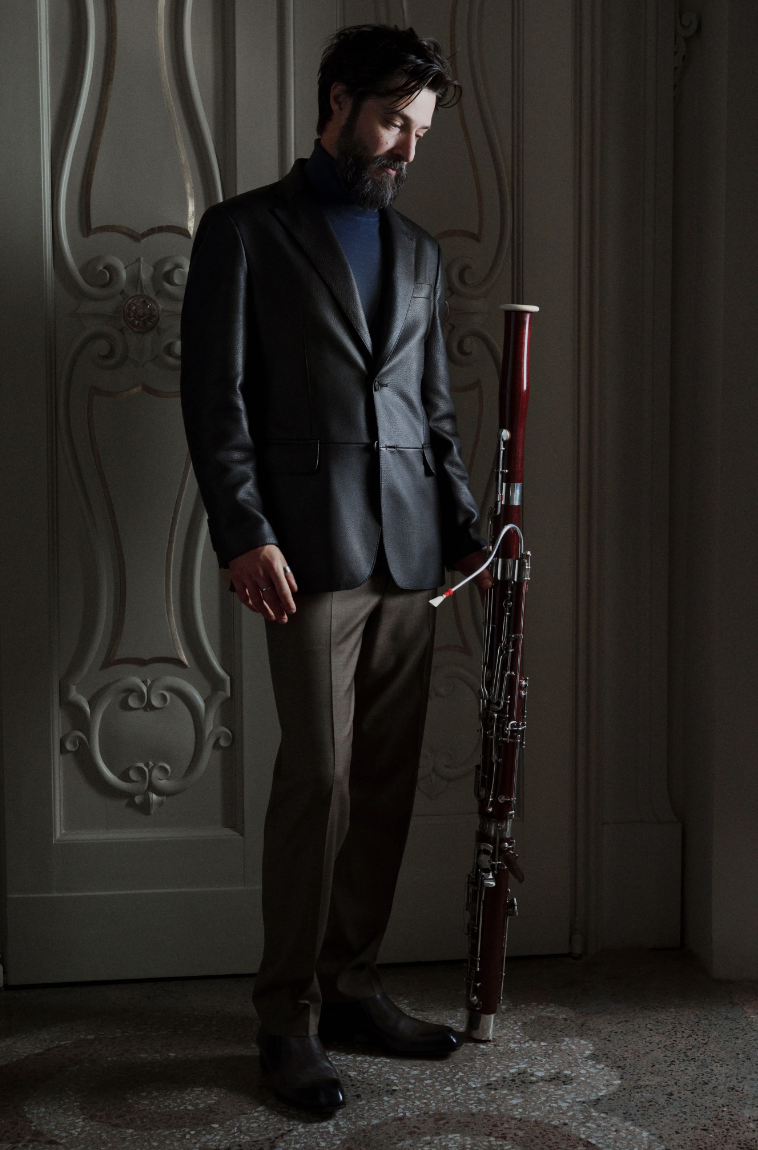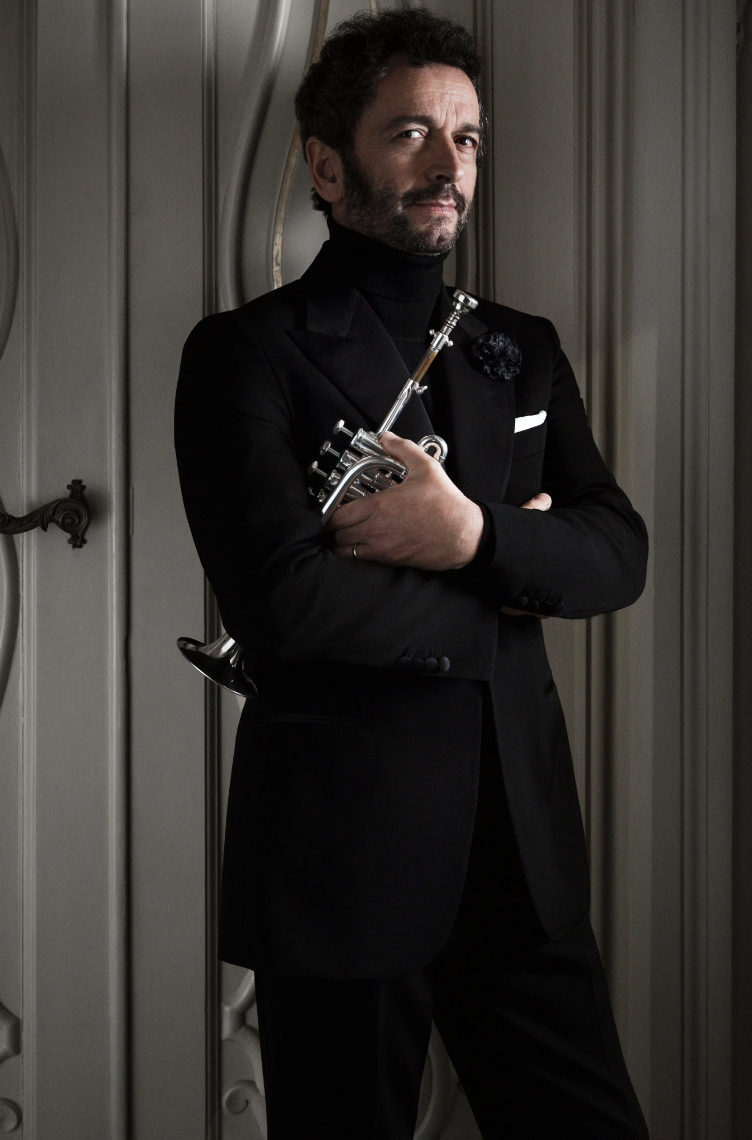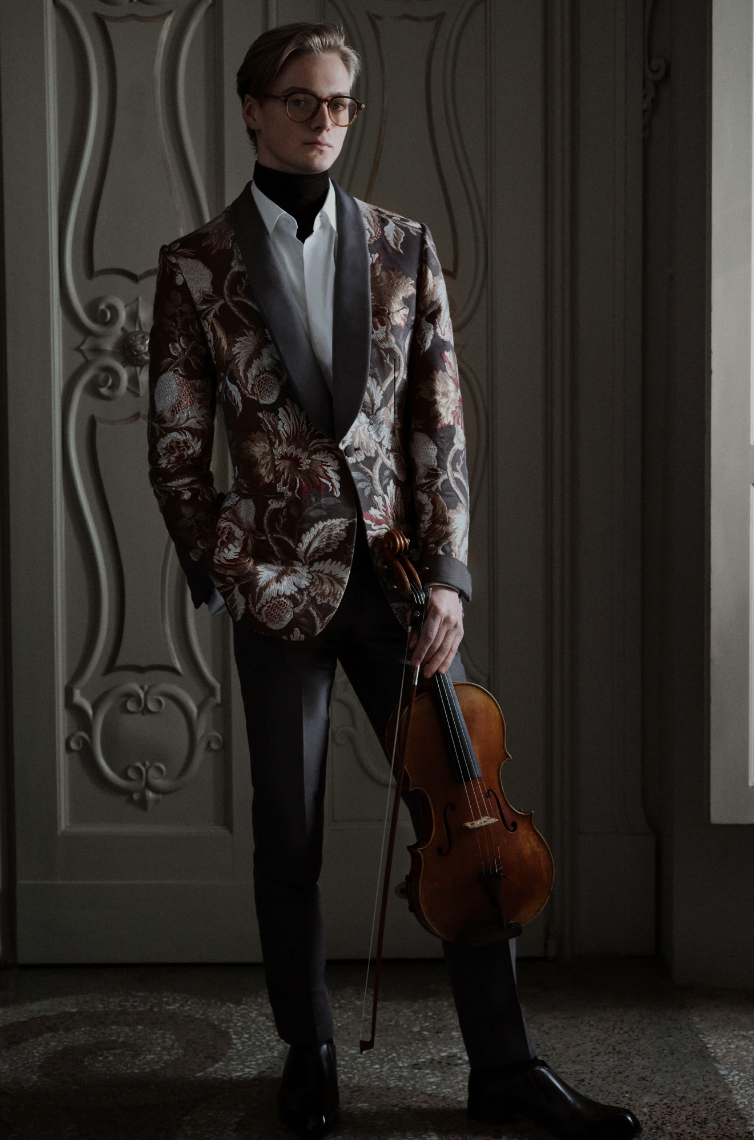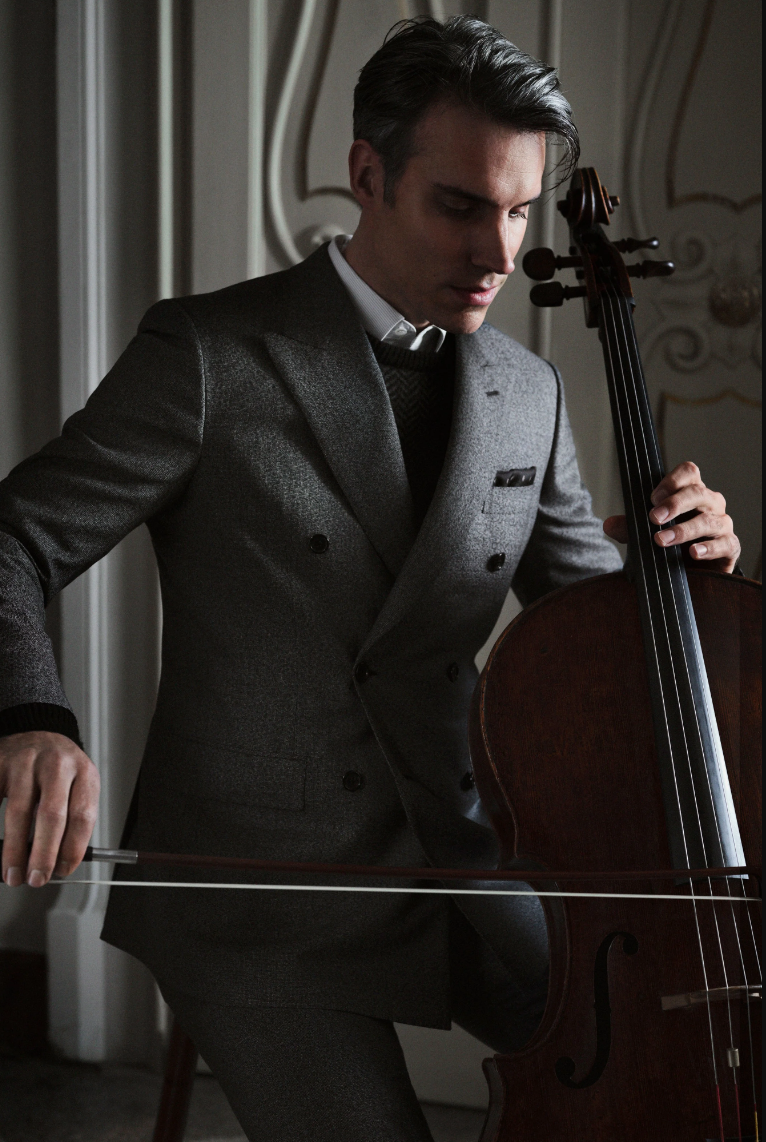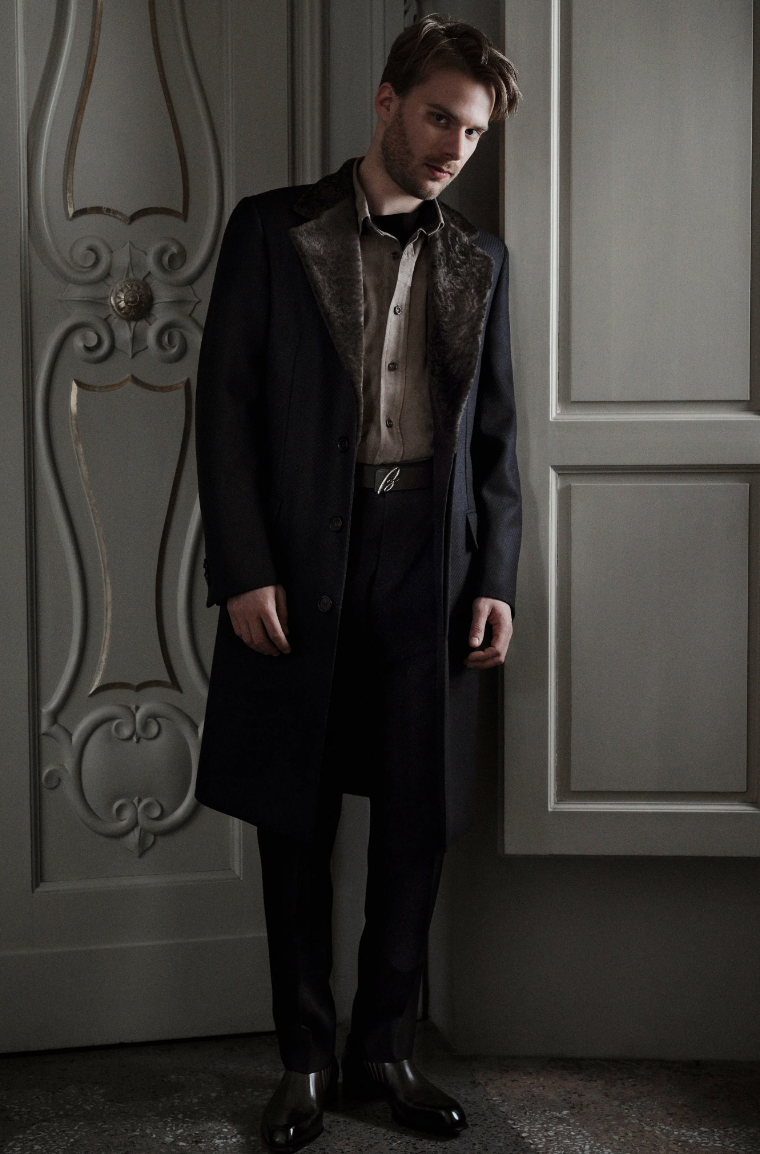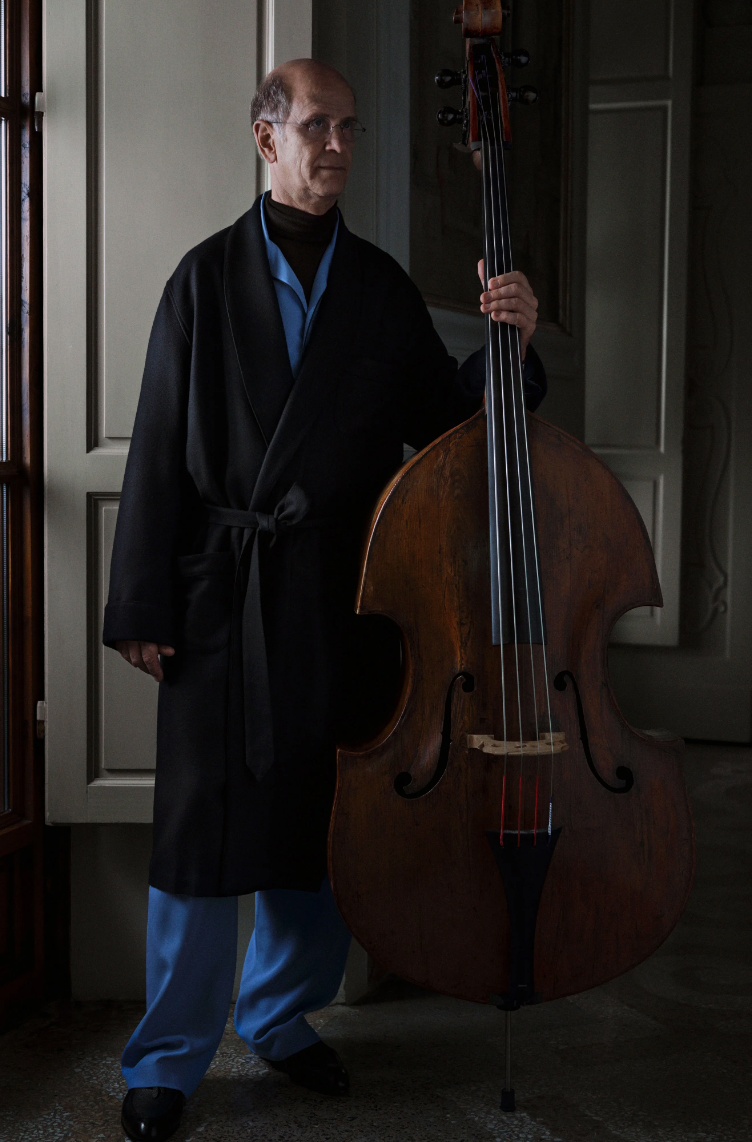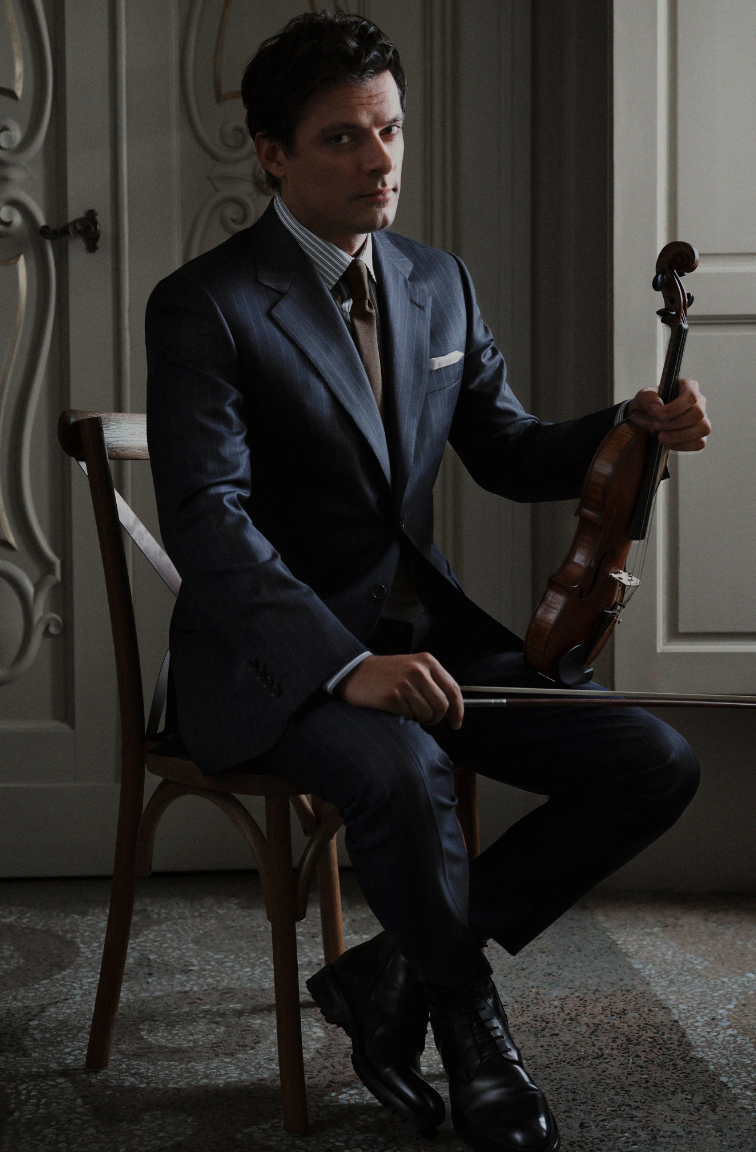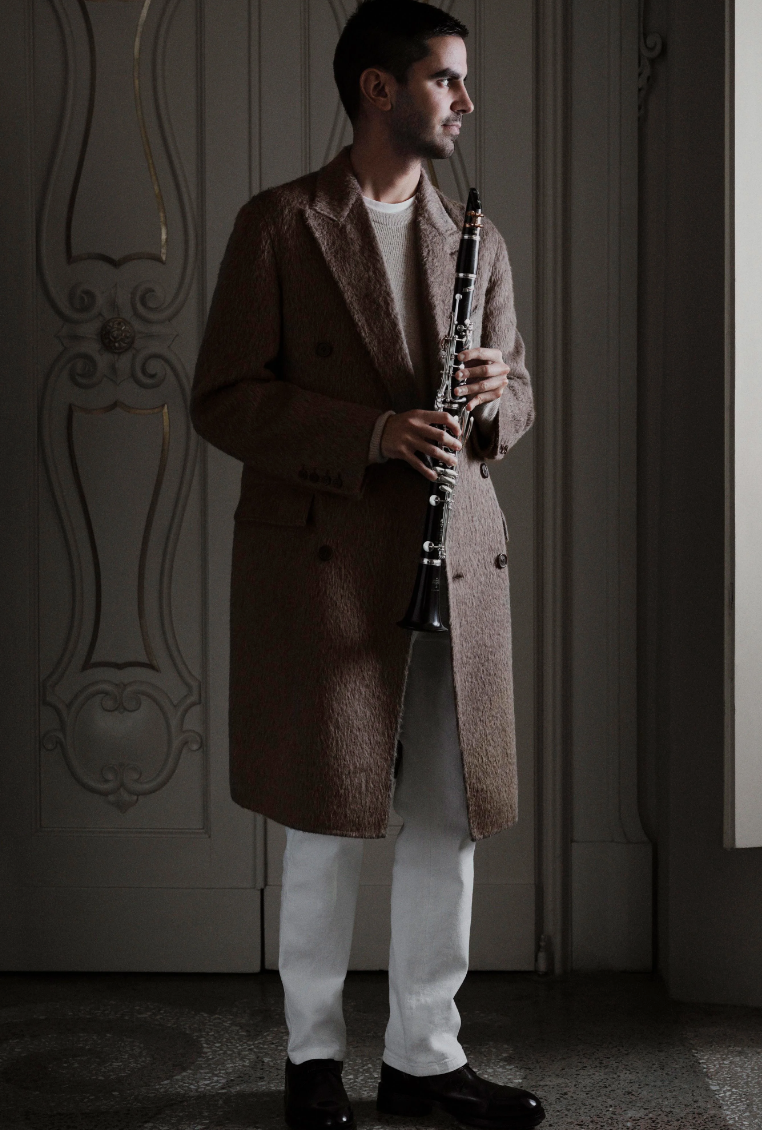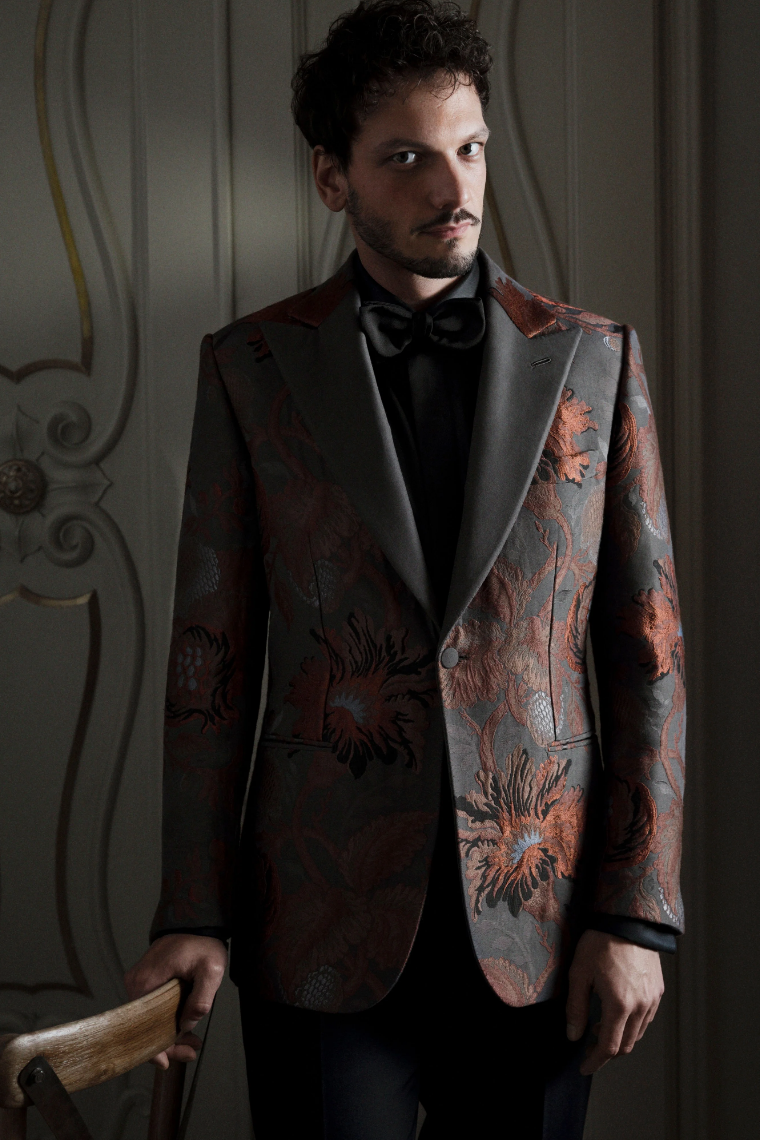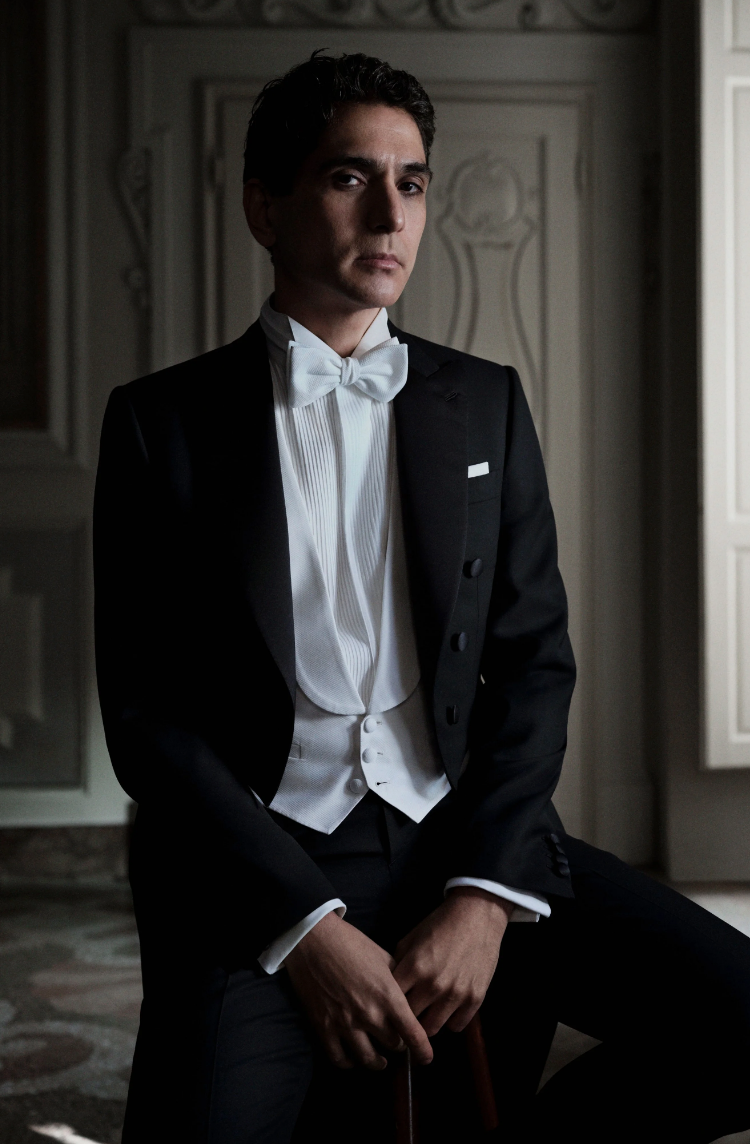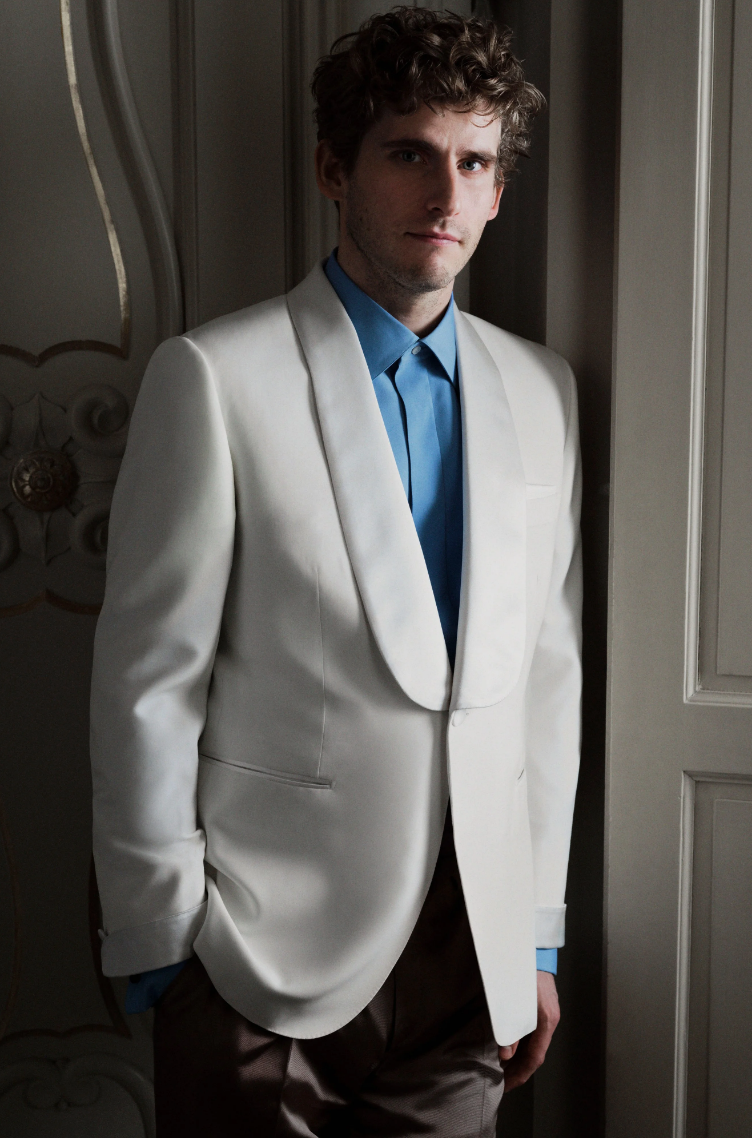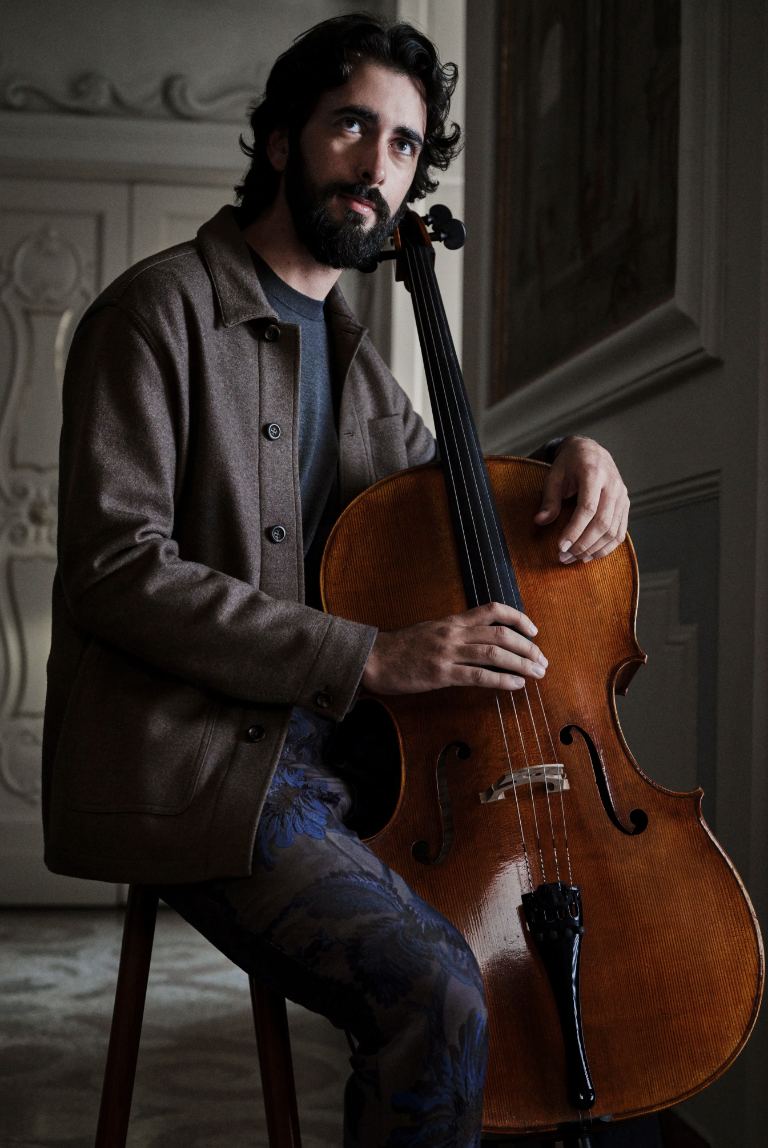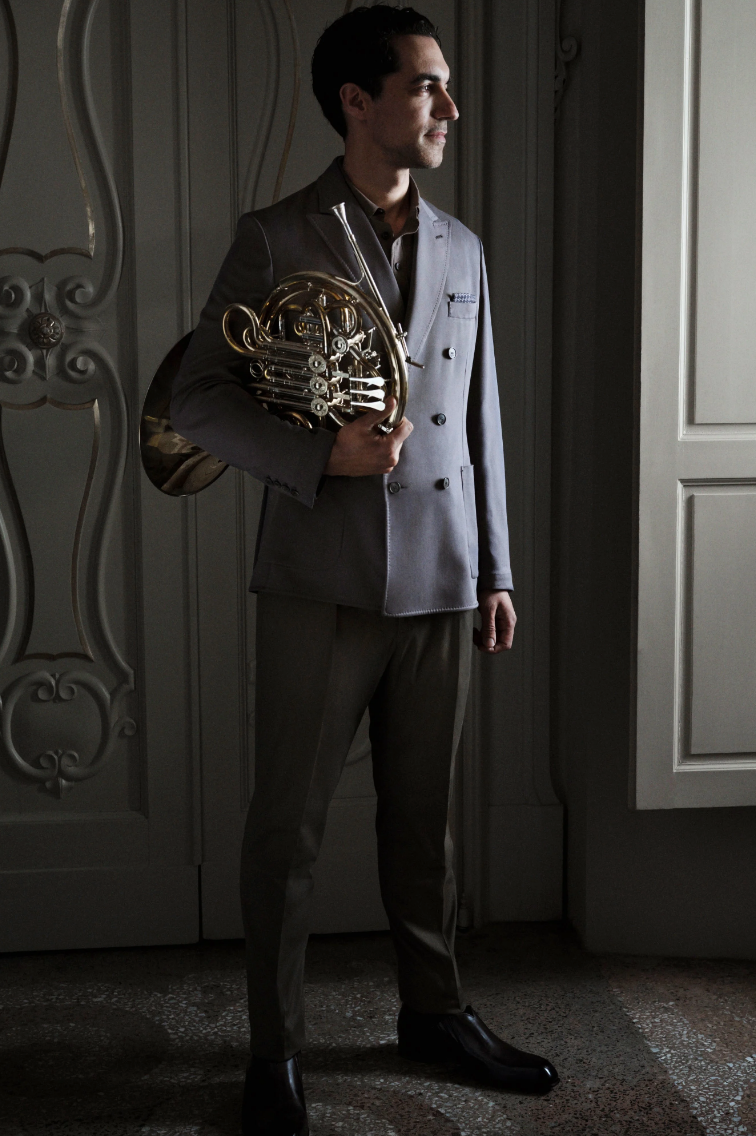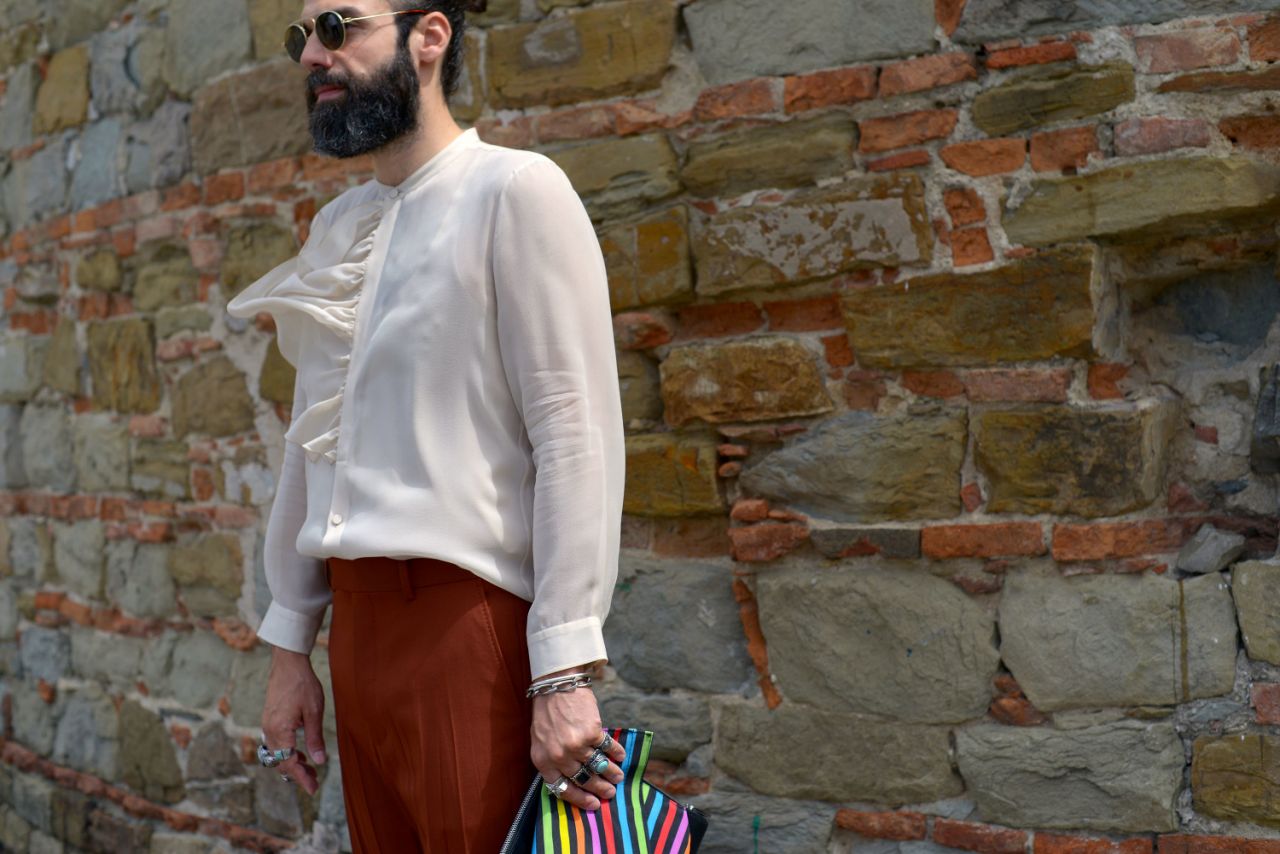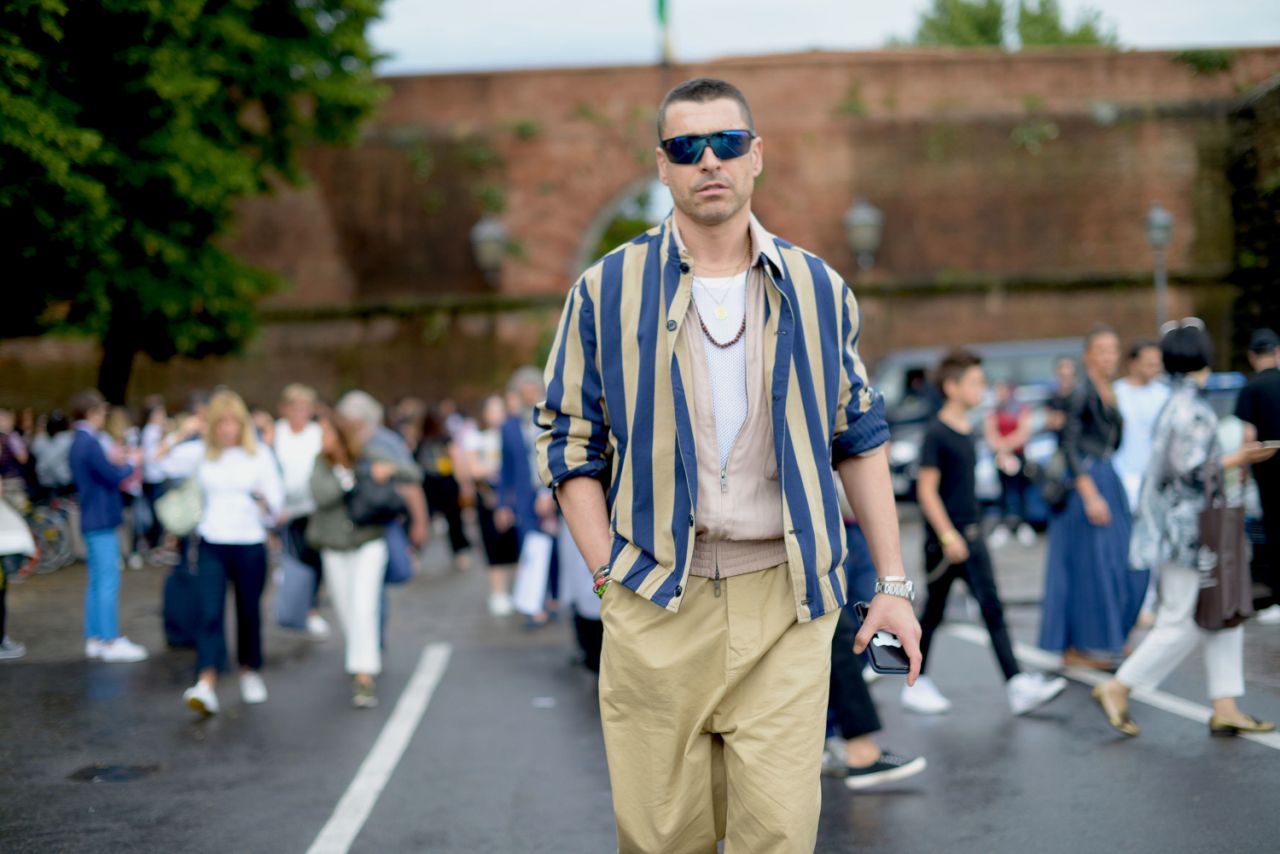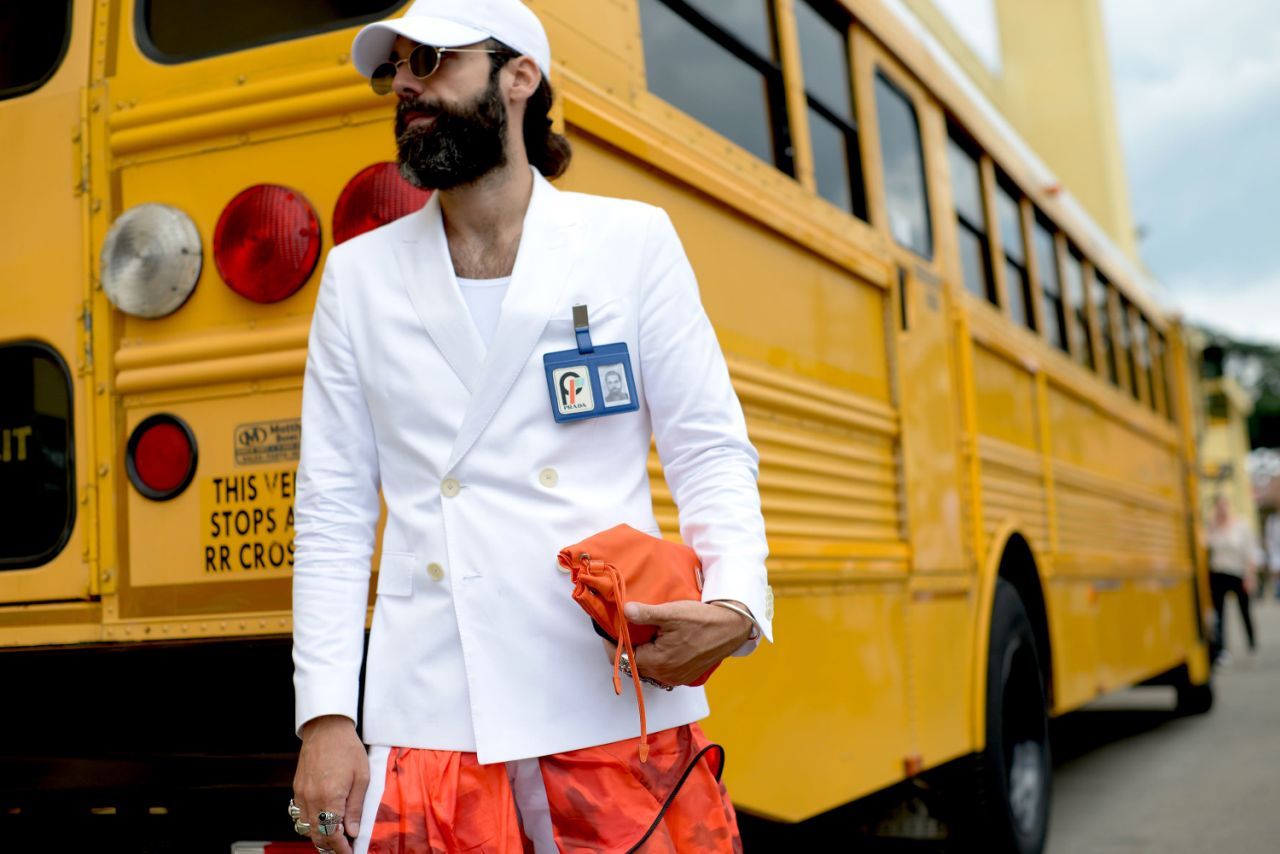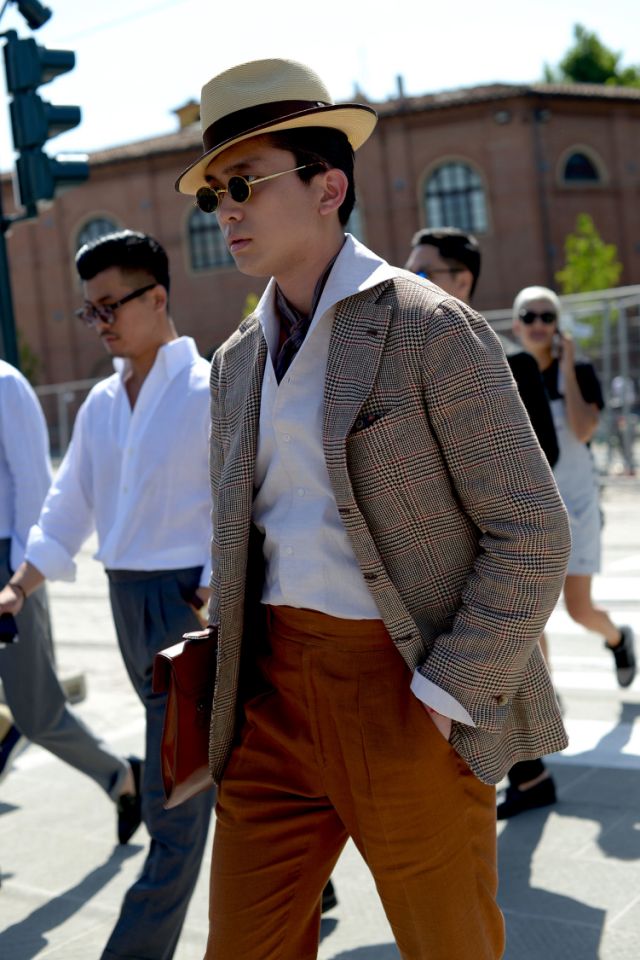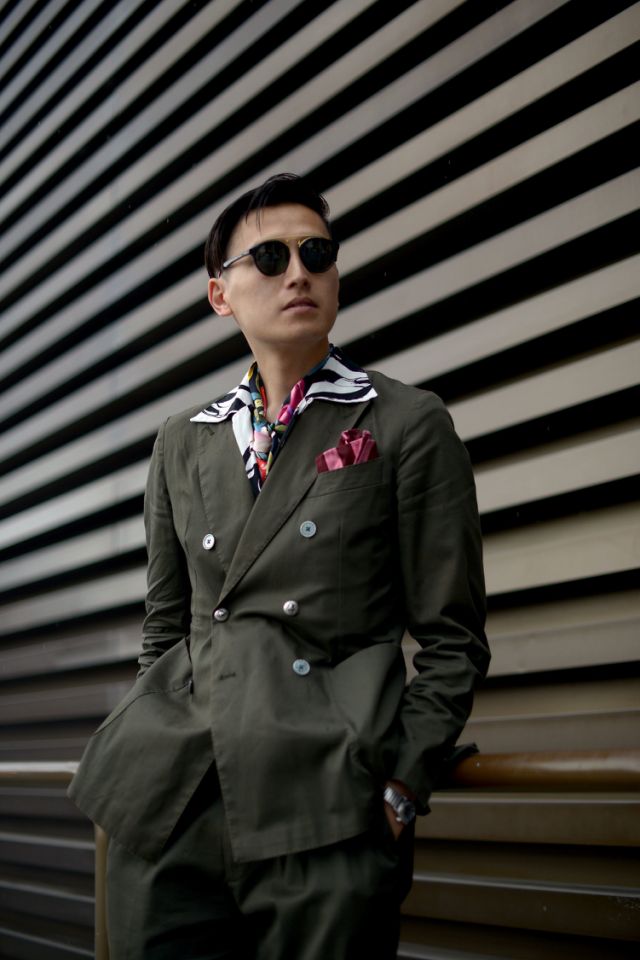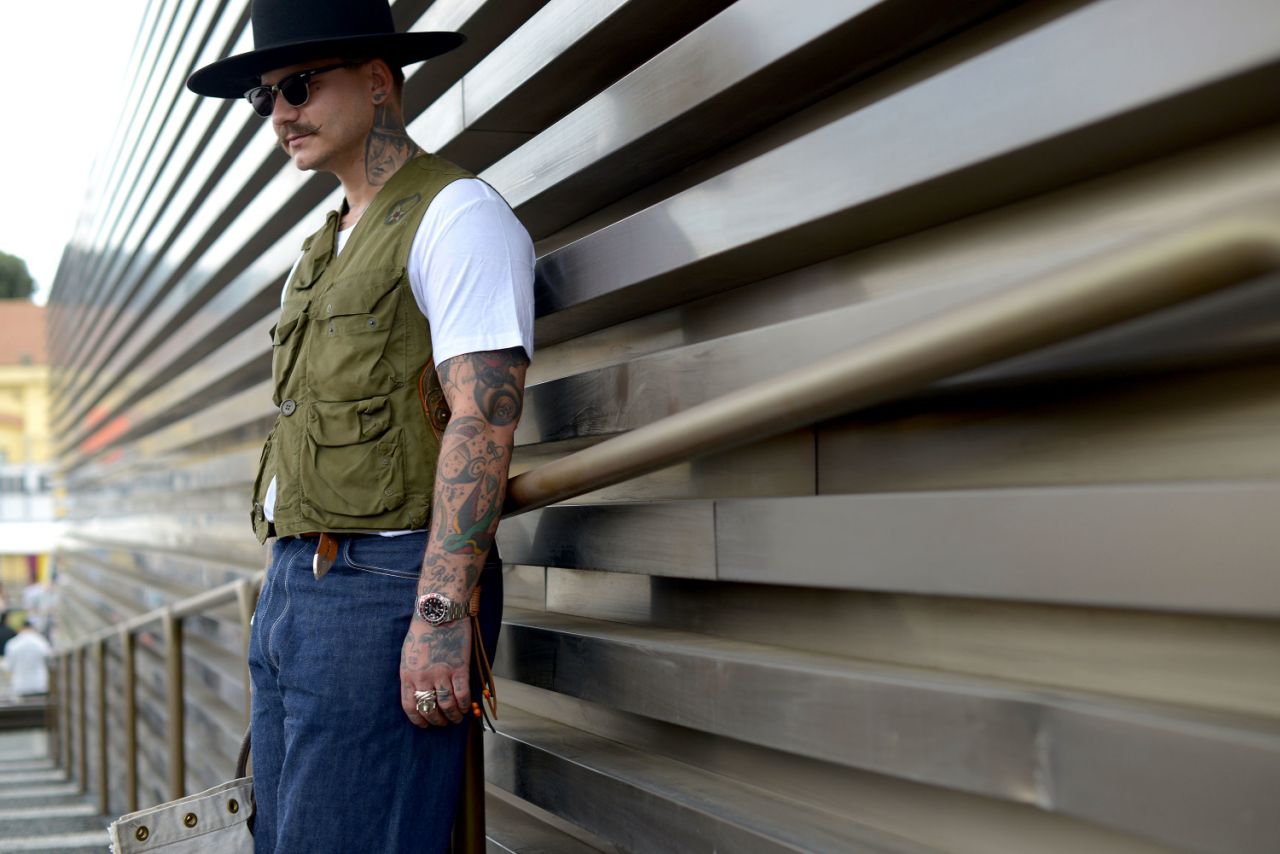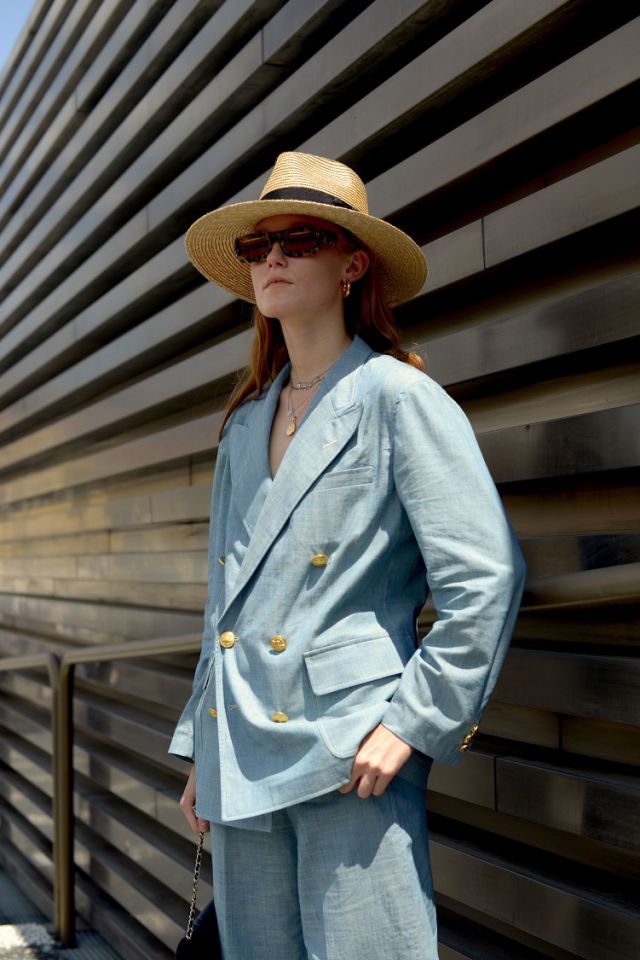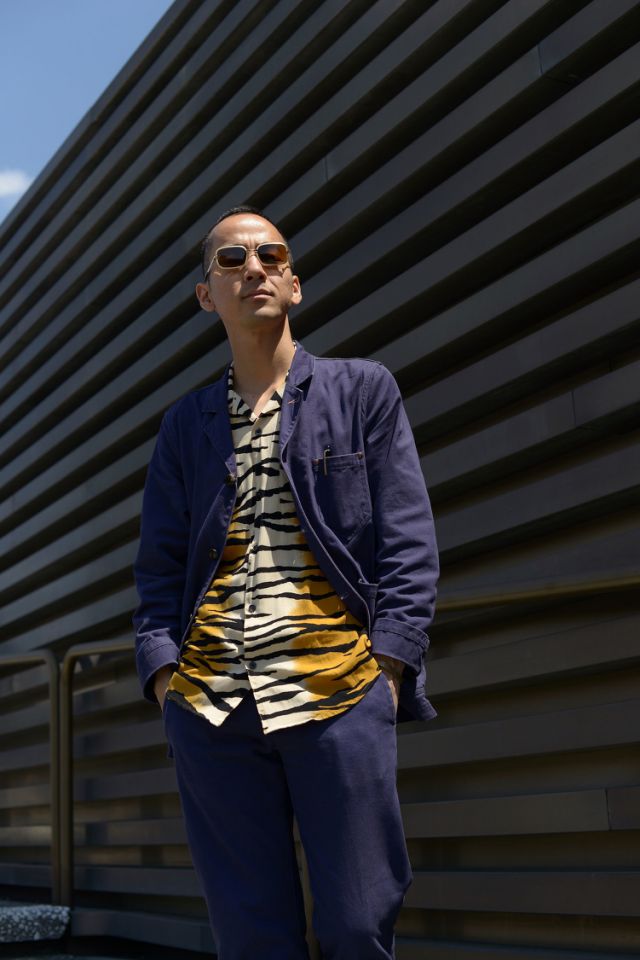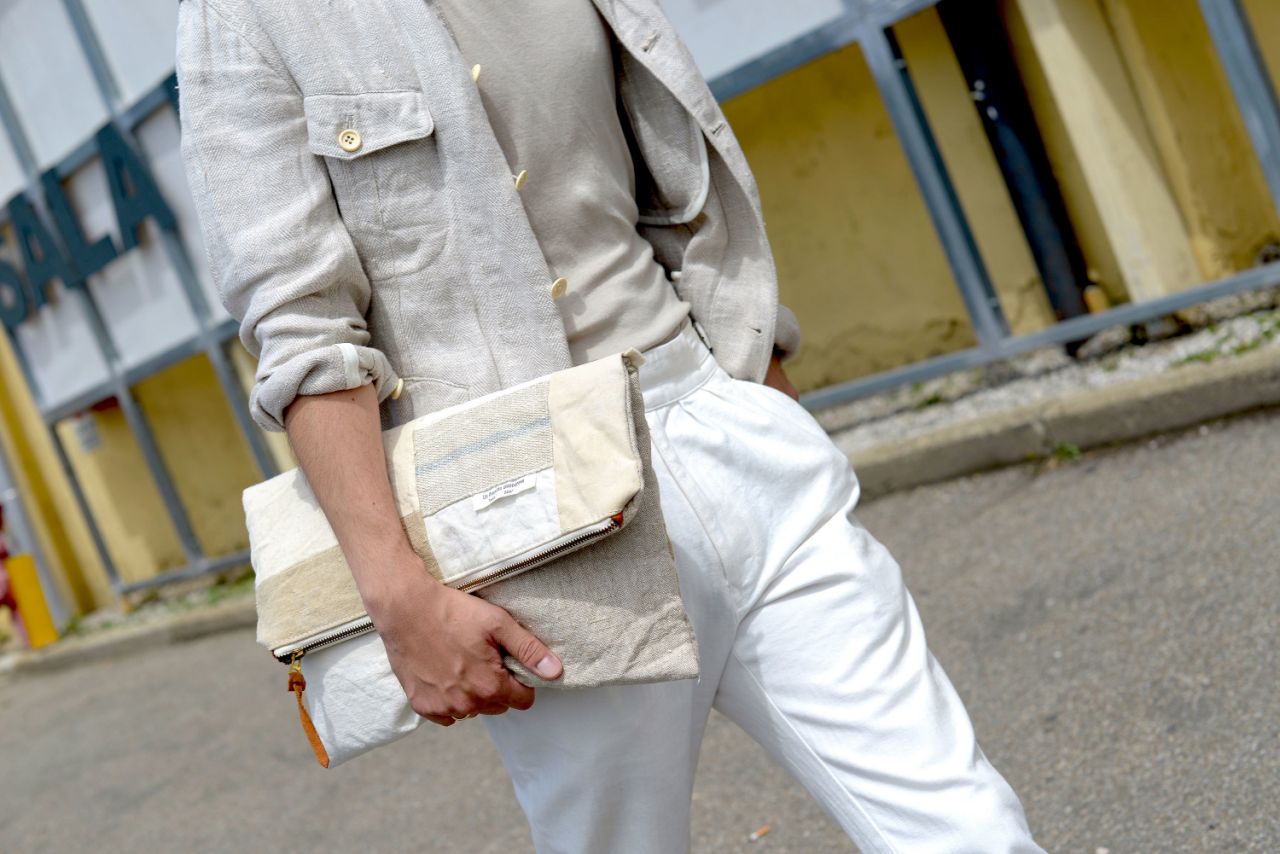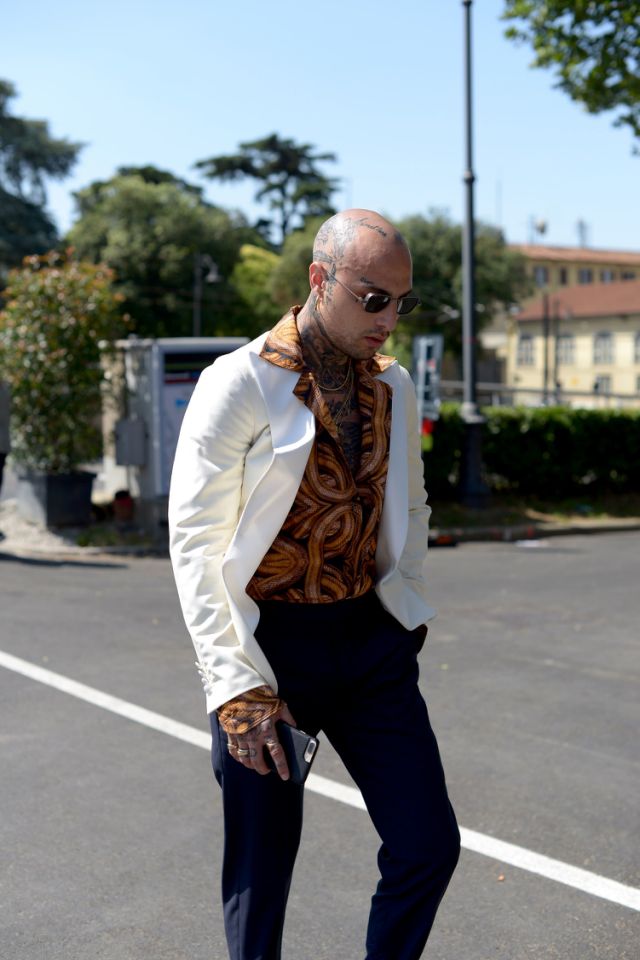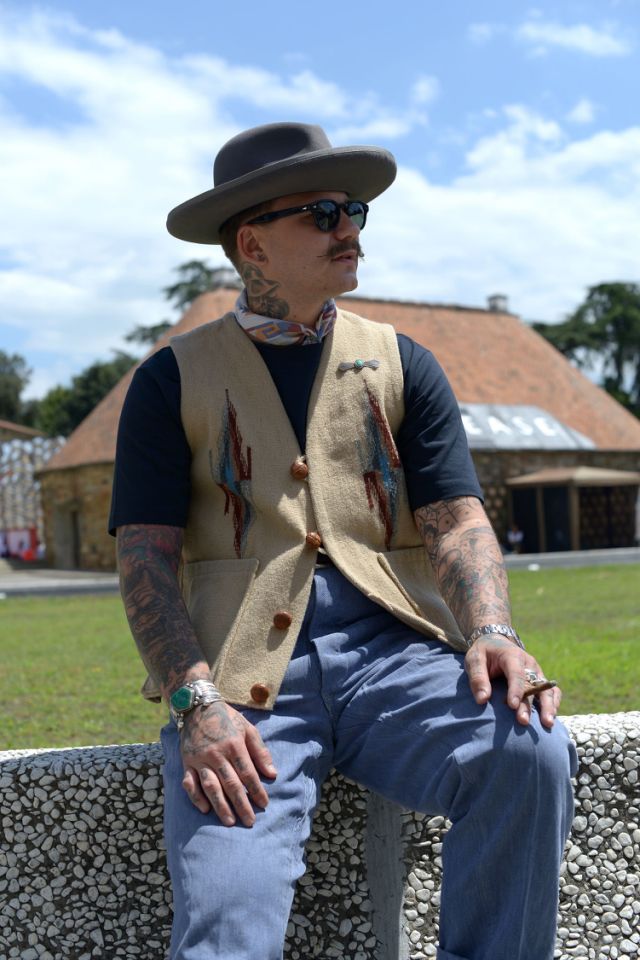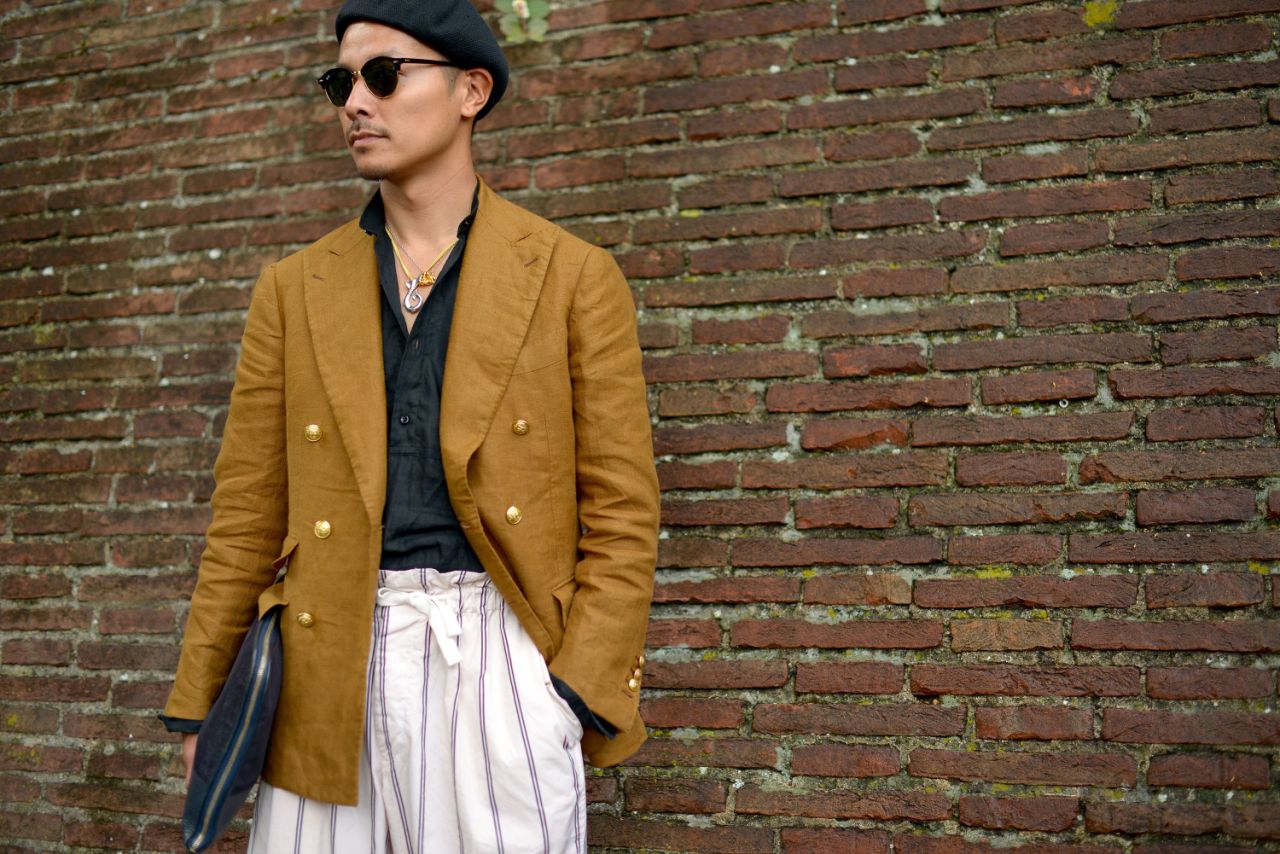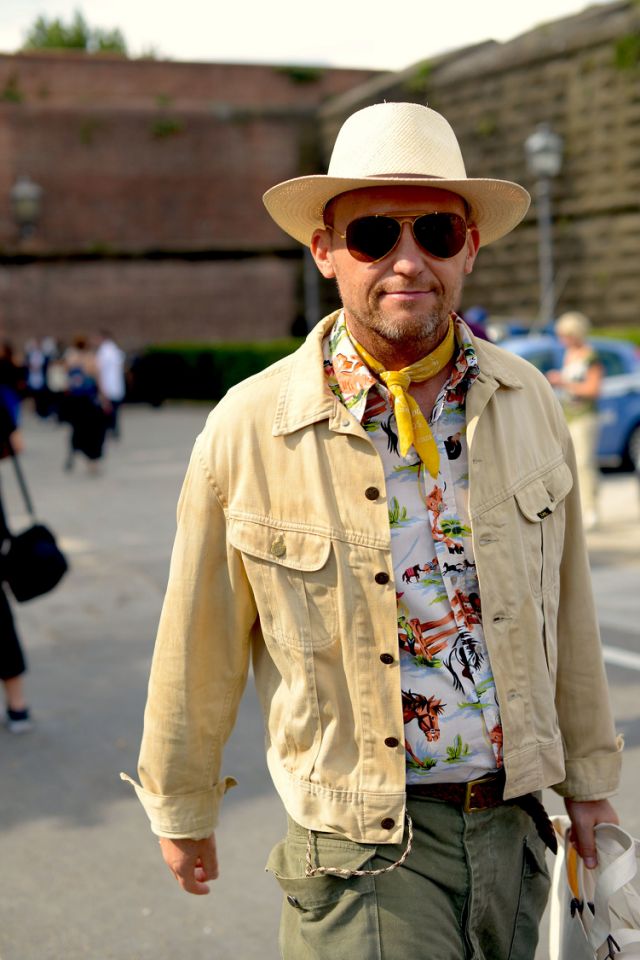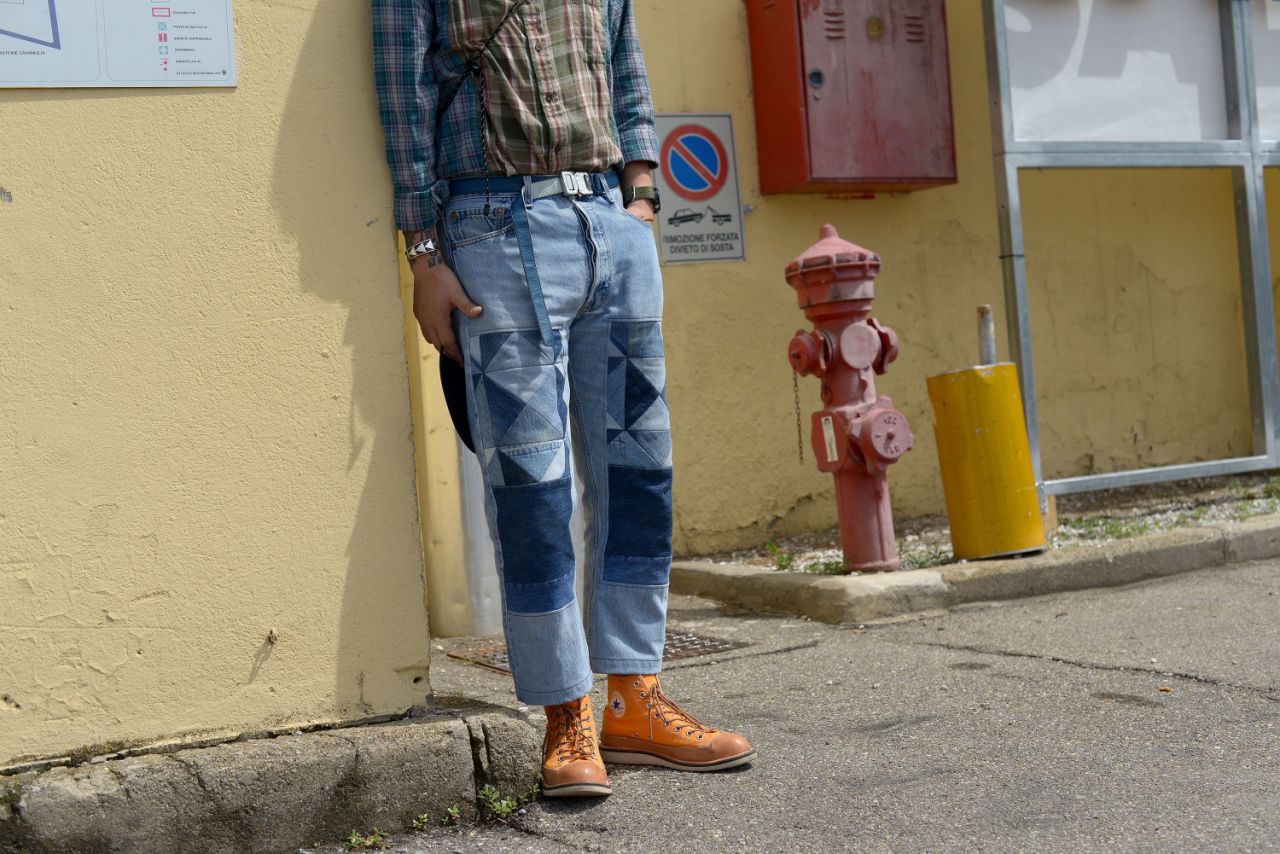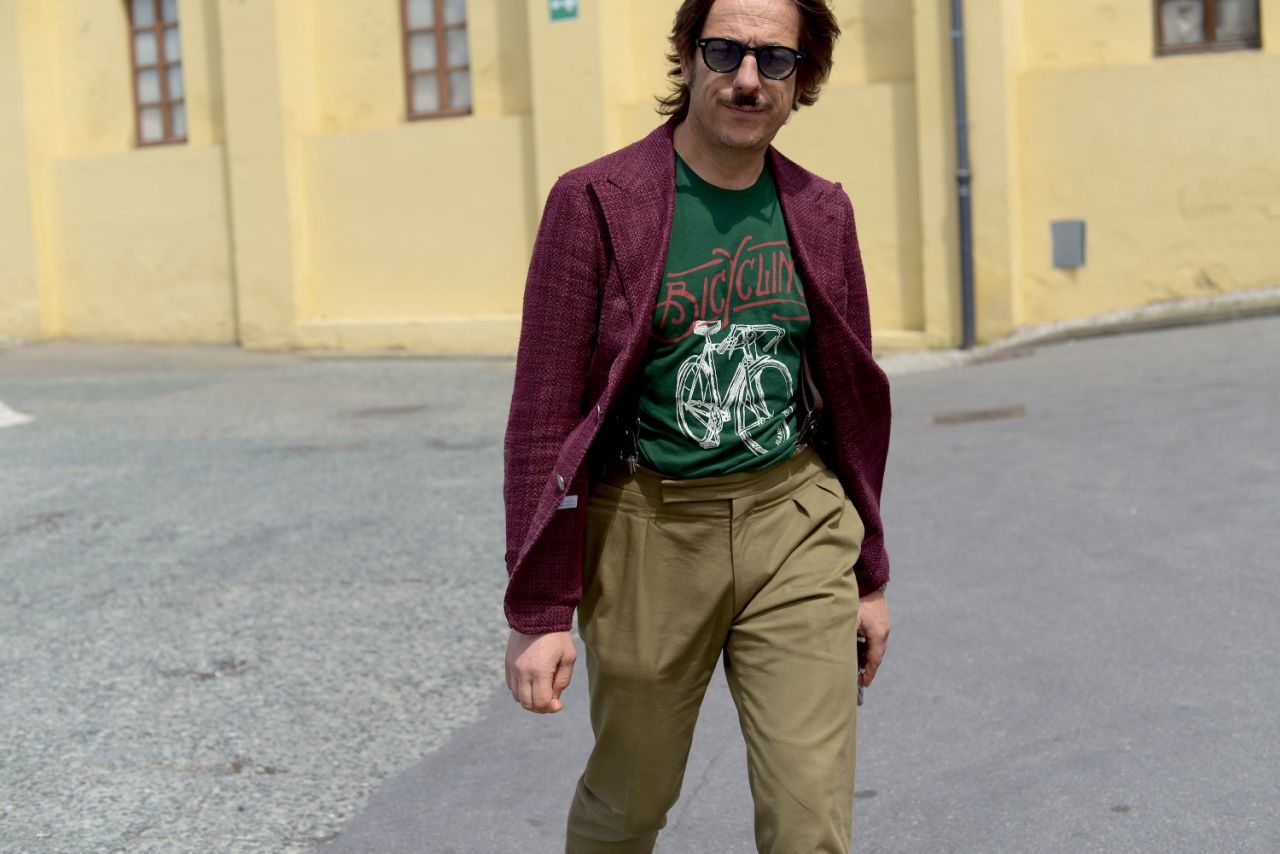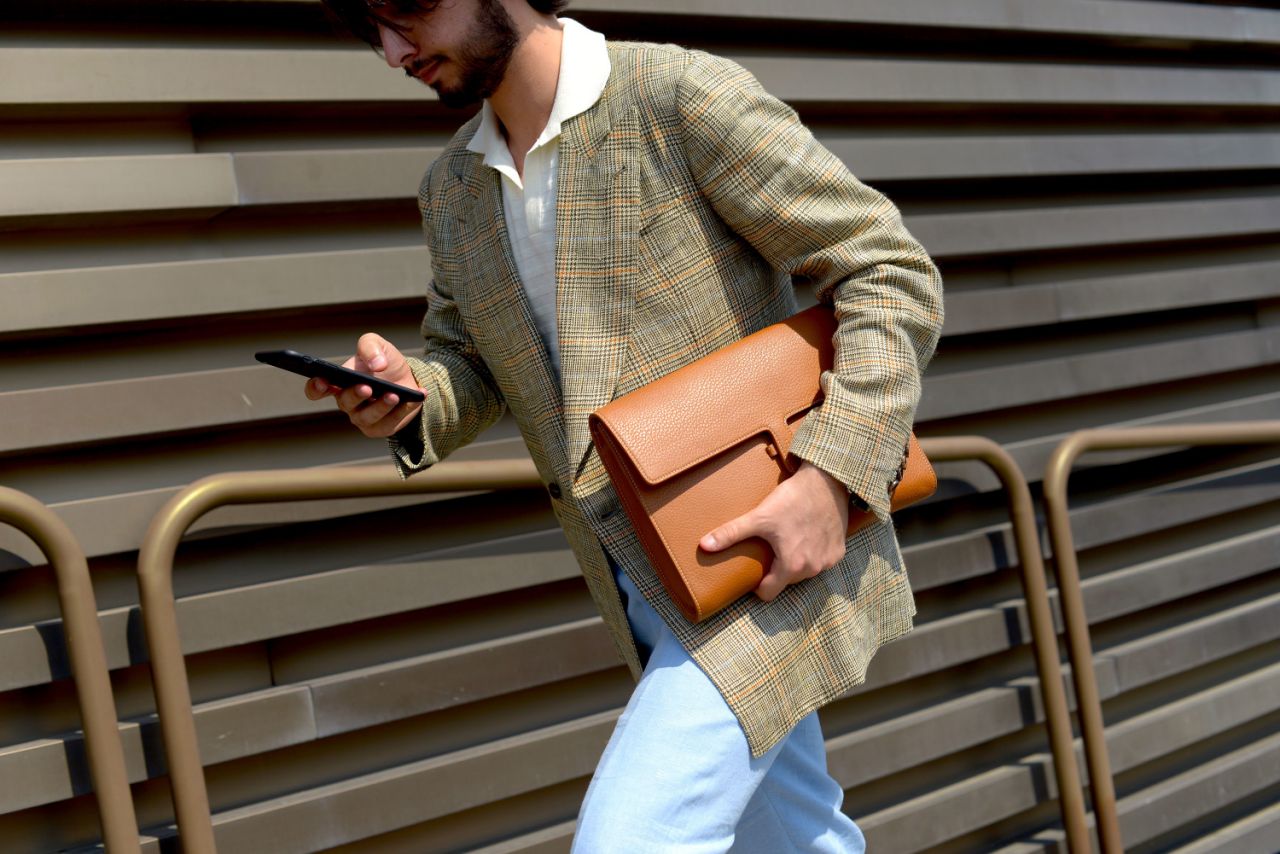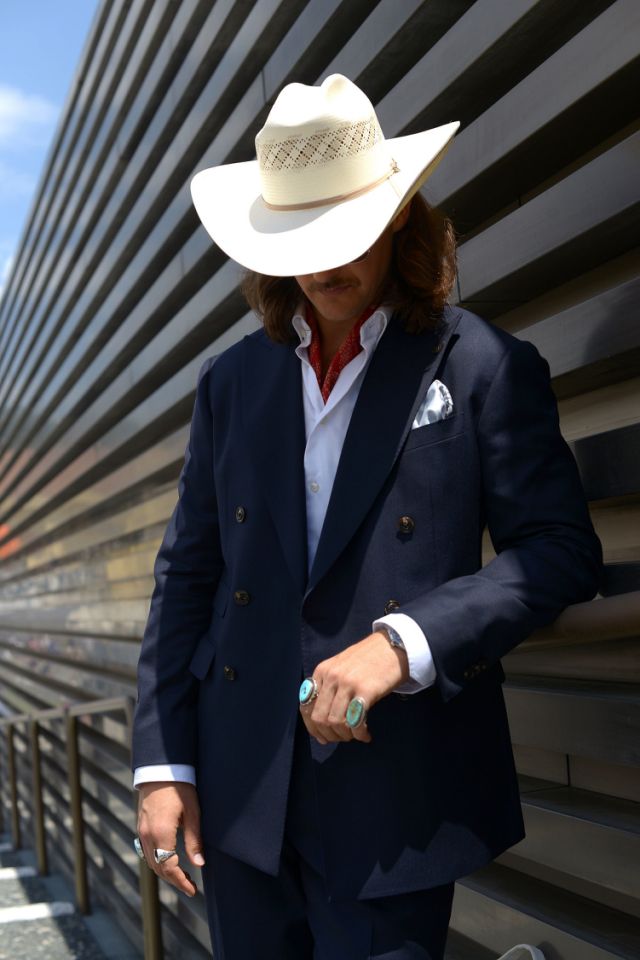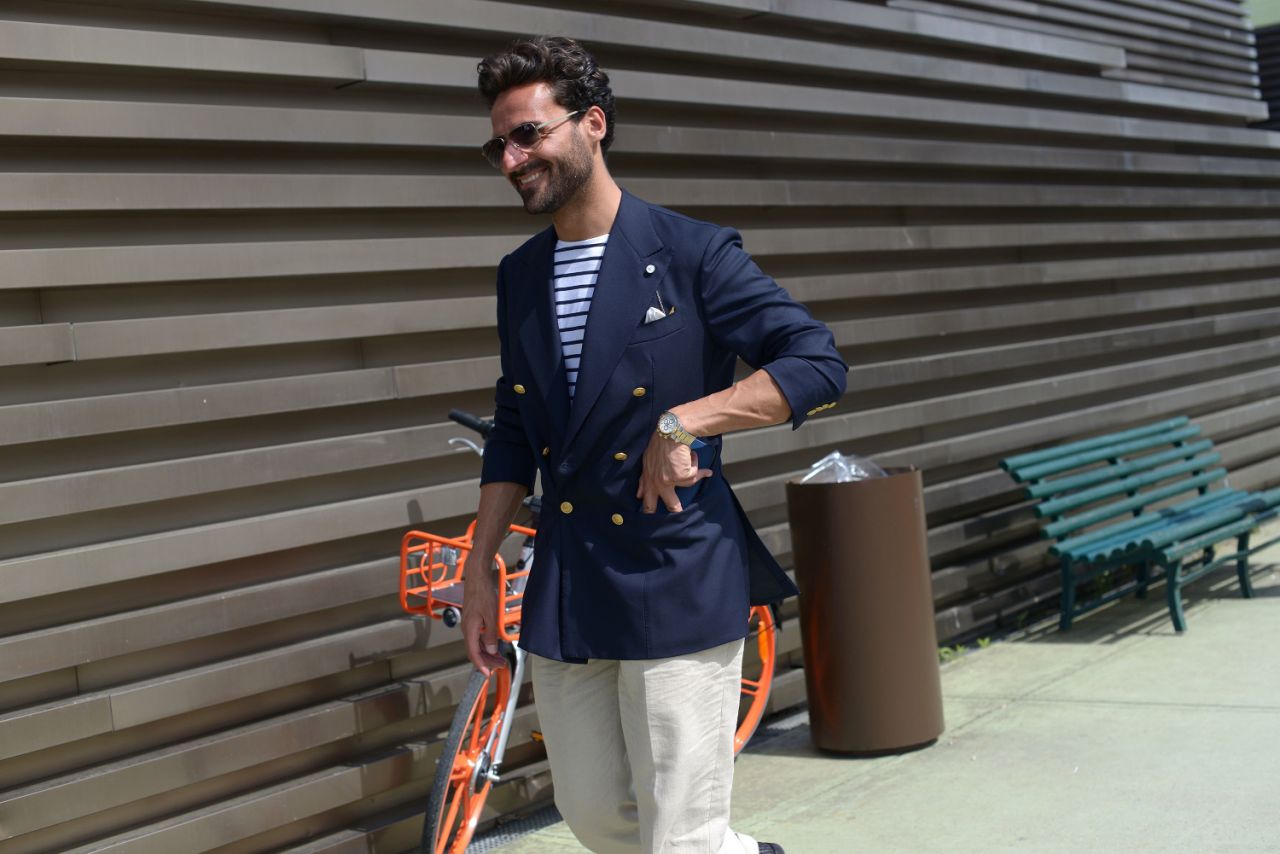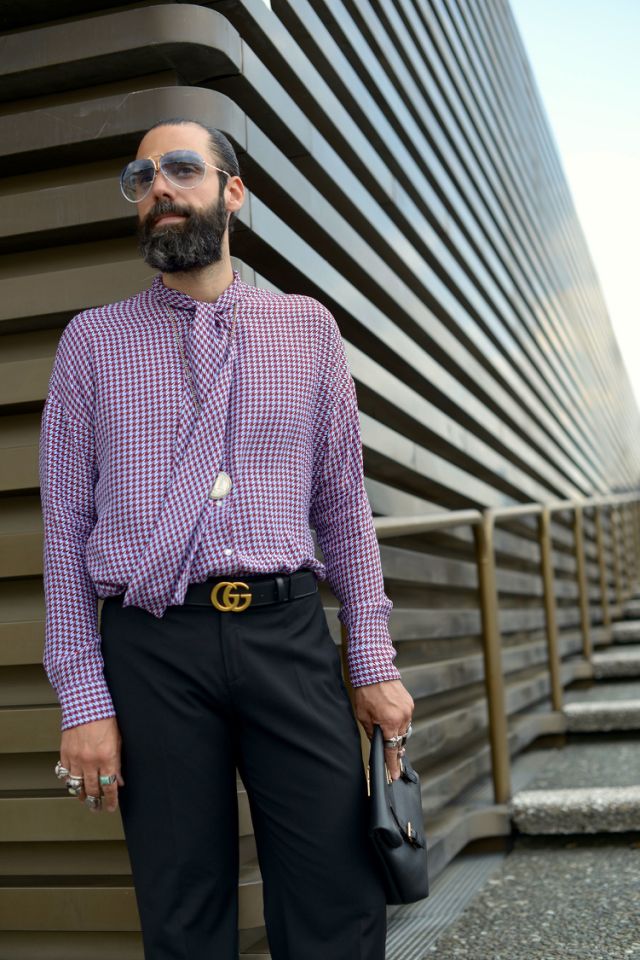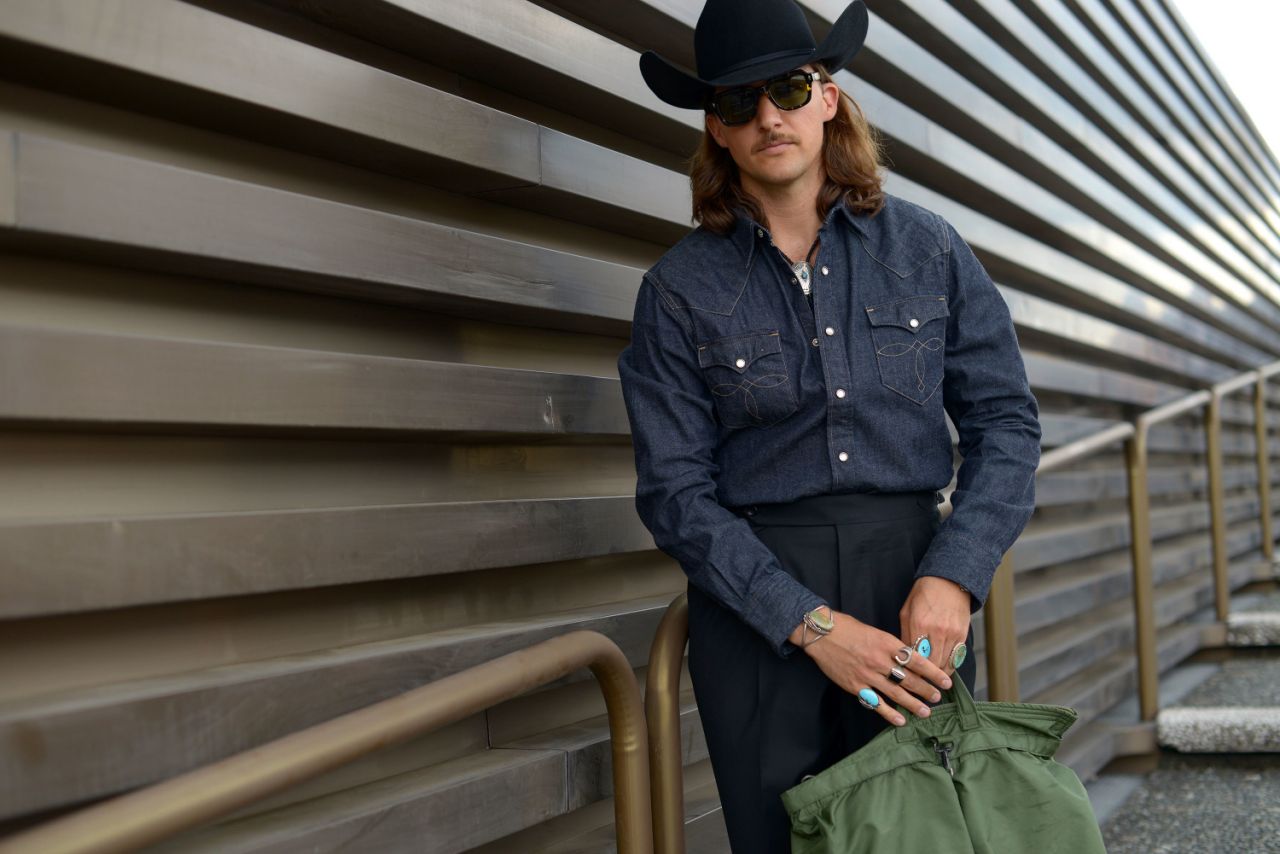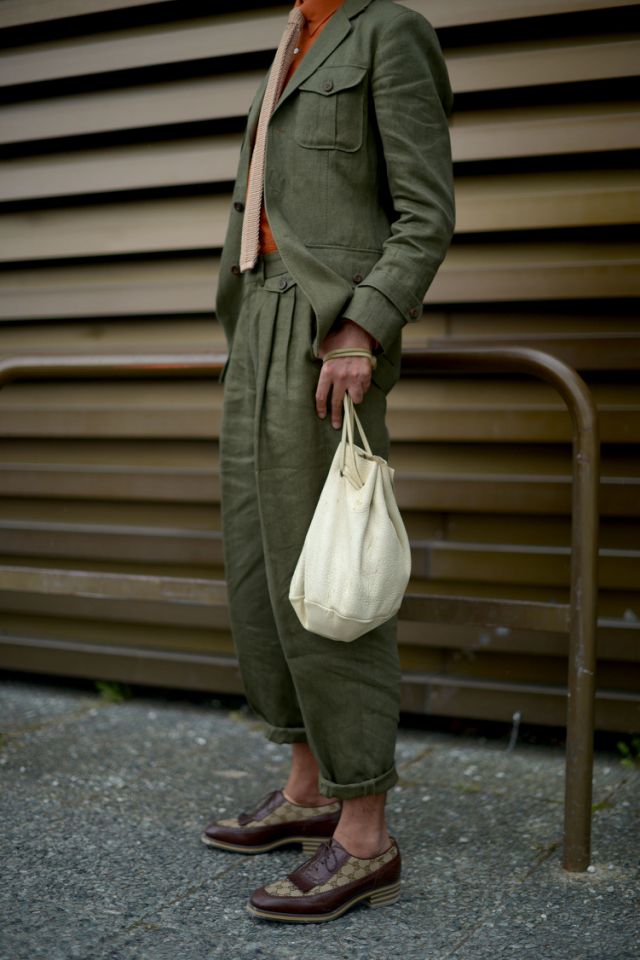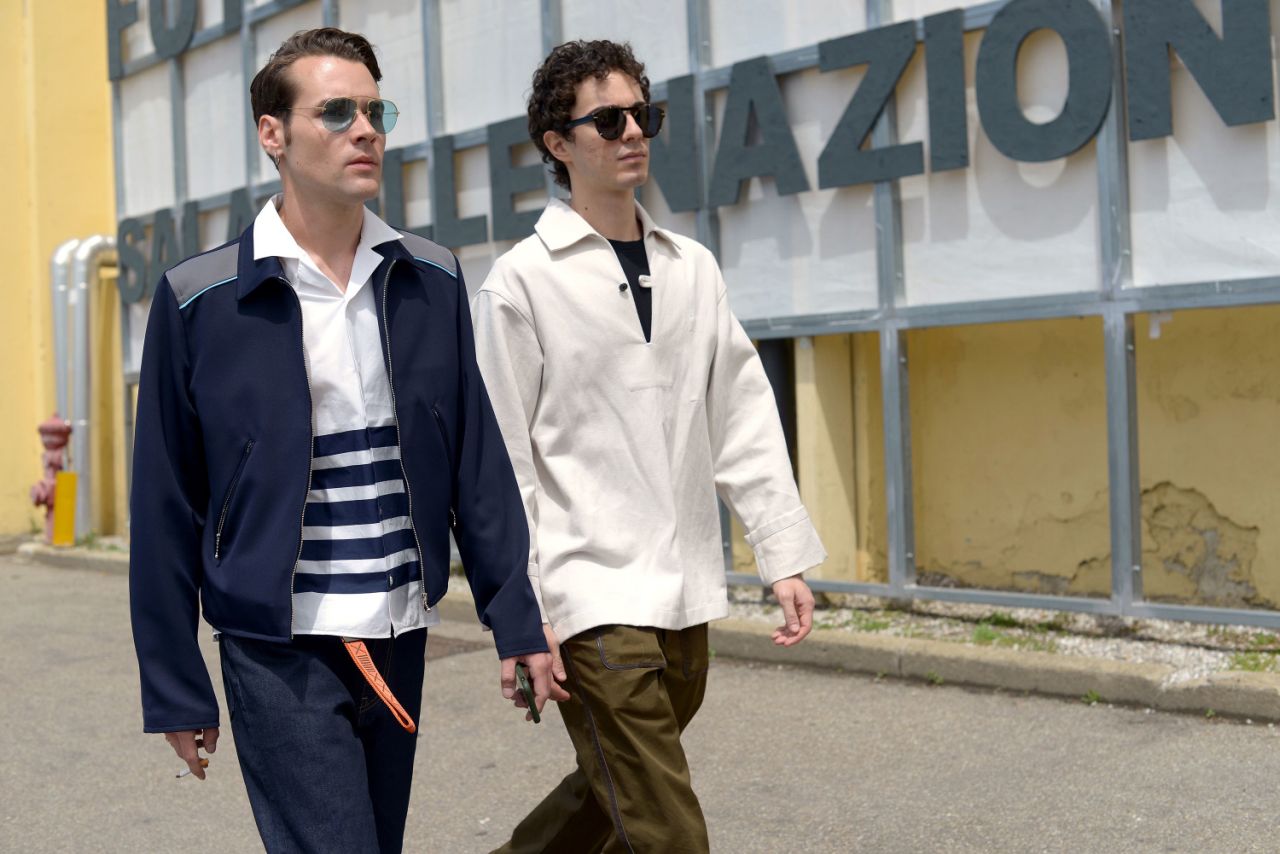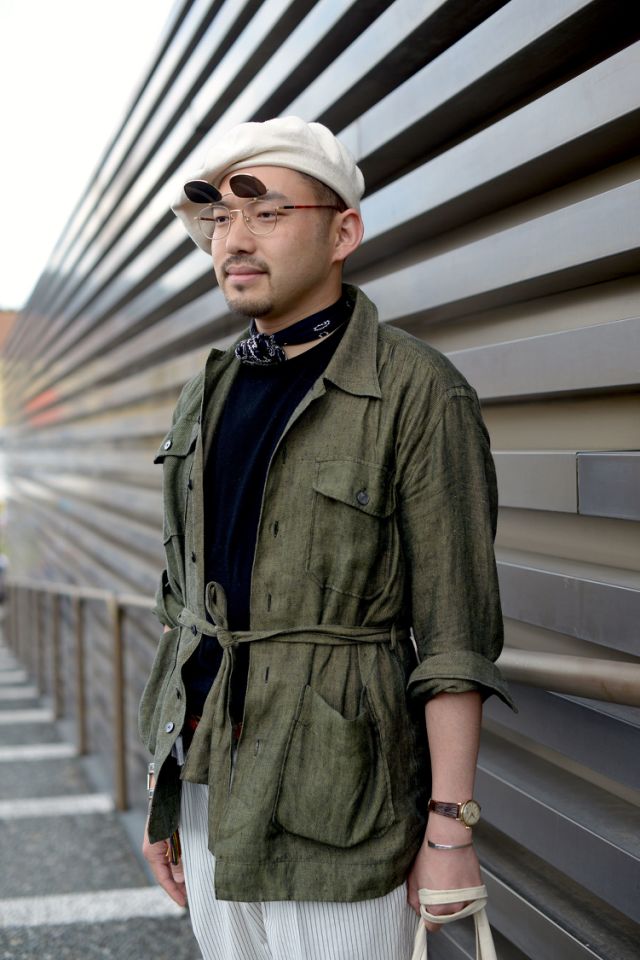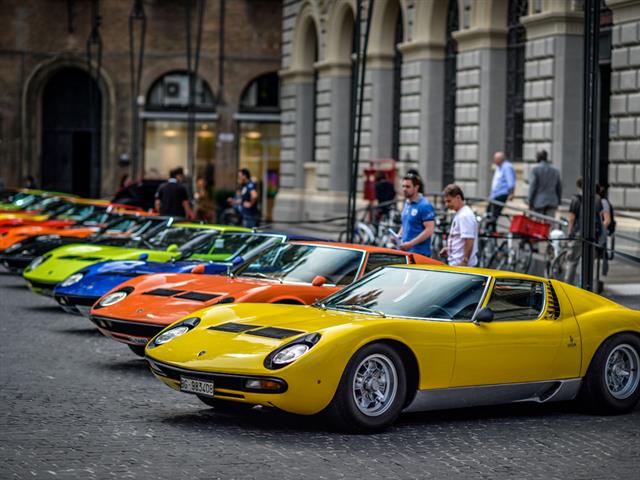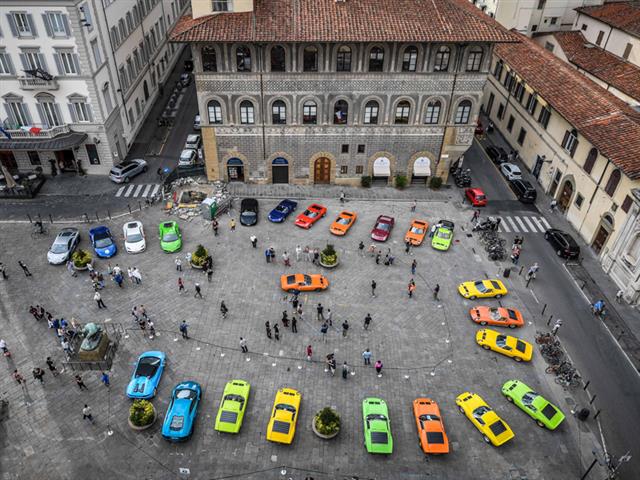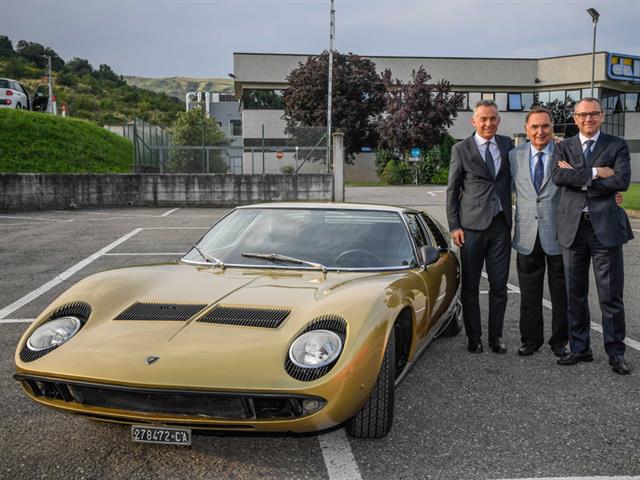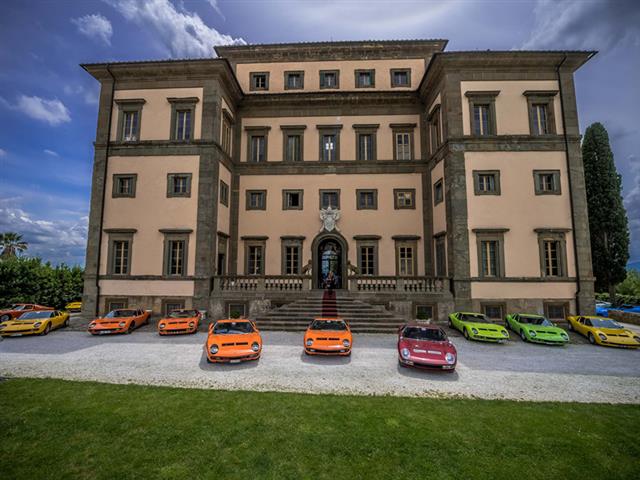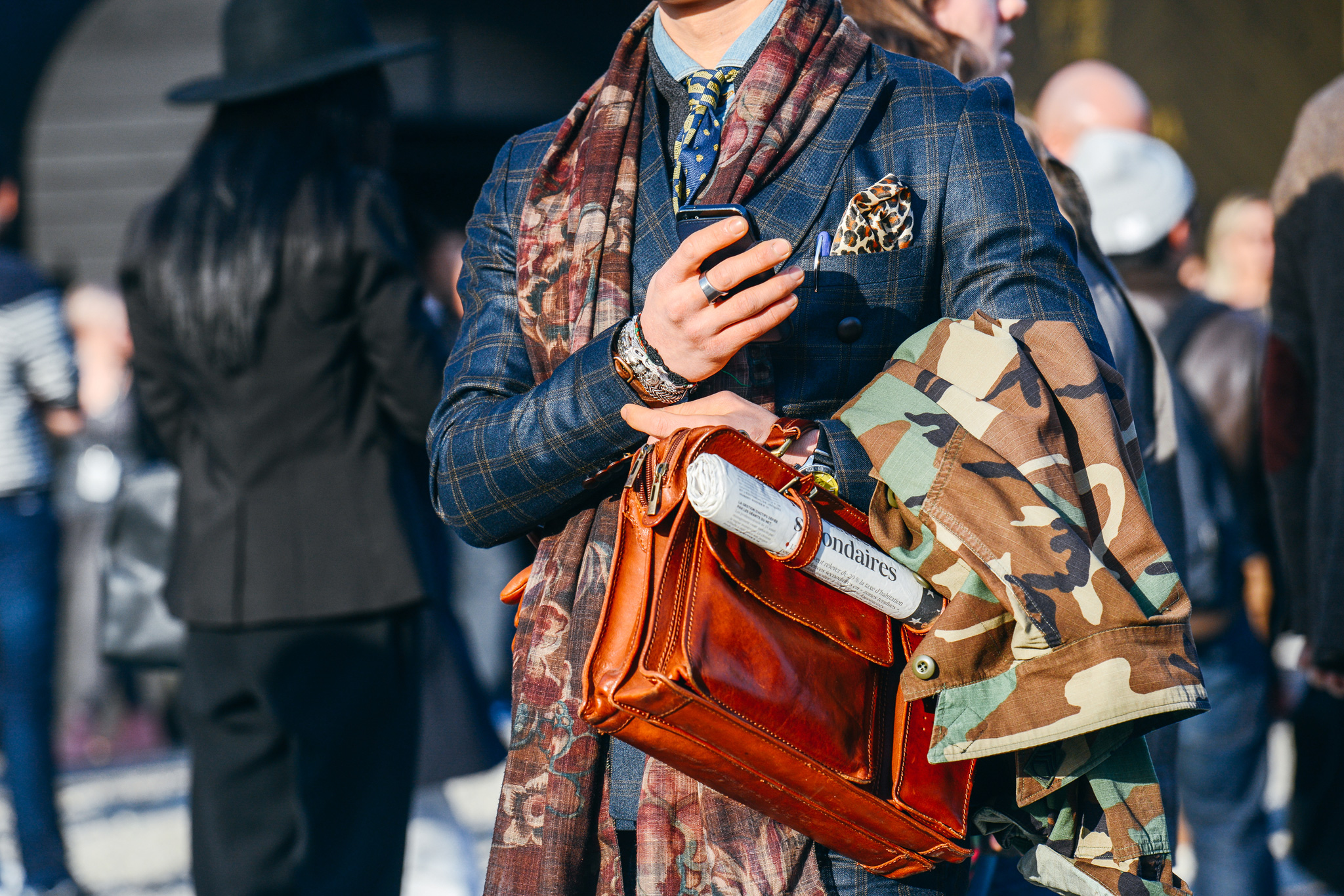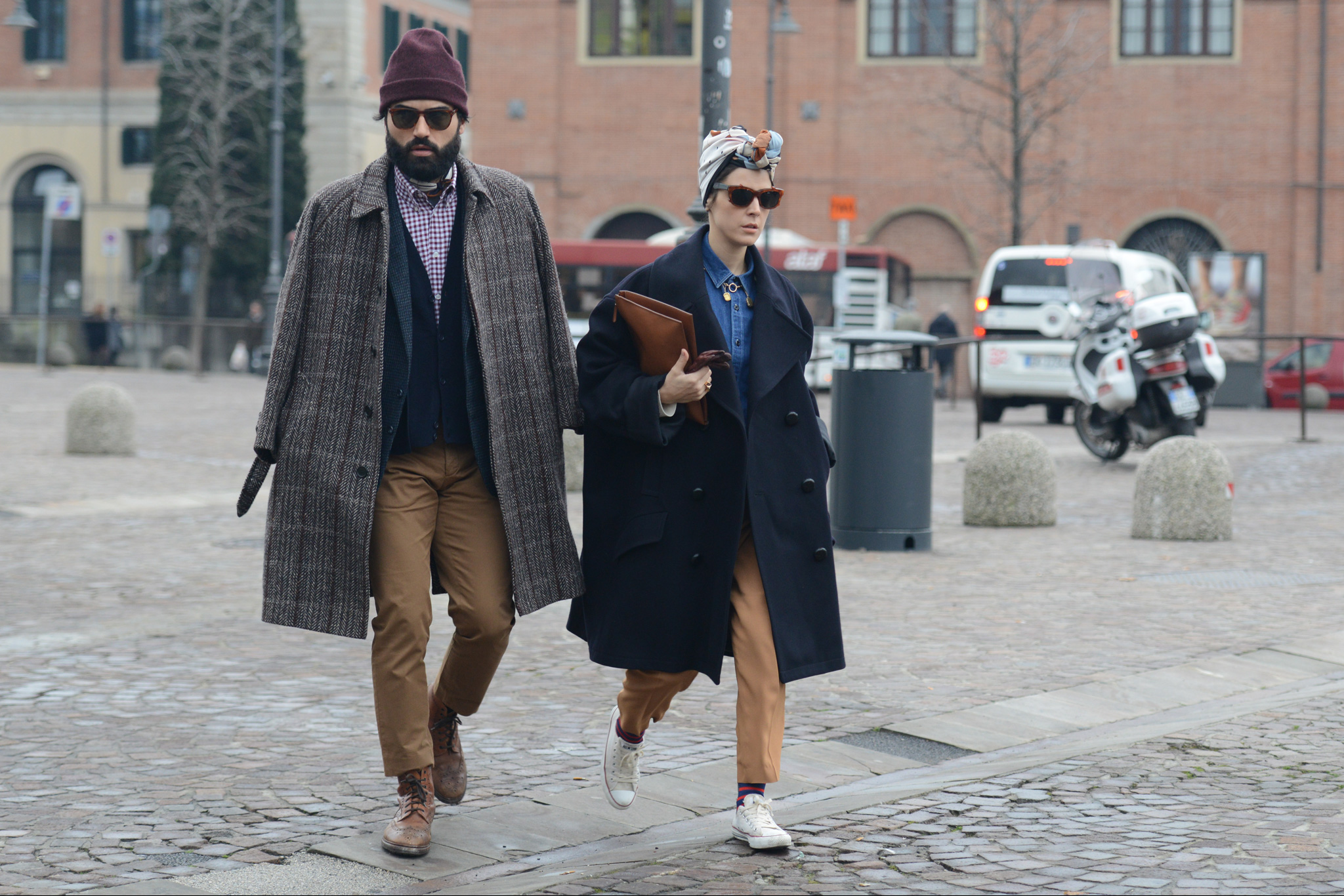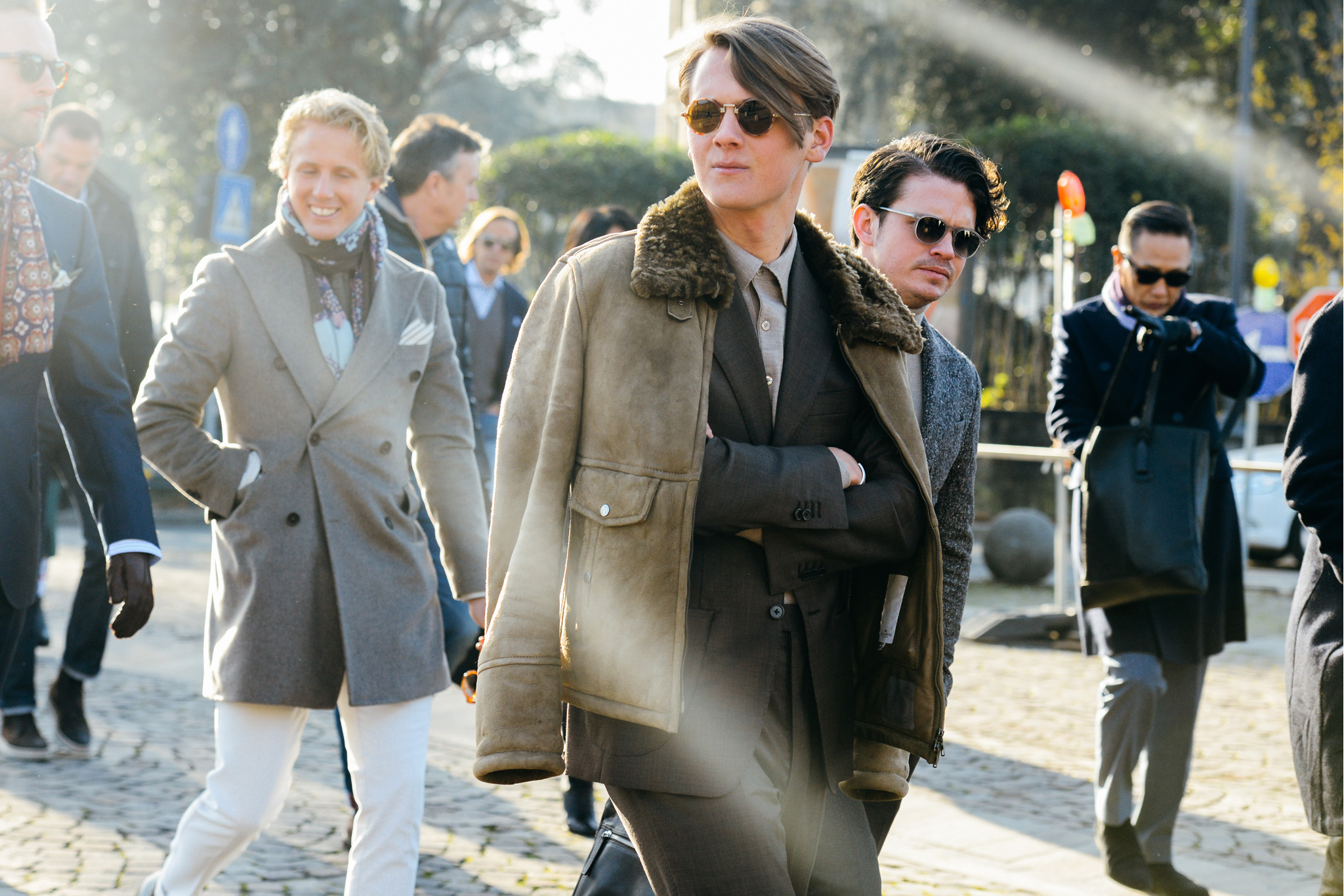The 15th-century salons and ballroom of the Palazzo Gerini were so darkened at this Pitti presentation—the chandeliers were switched off and draped with tattered muslin, and the only light sources were artificial candles clustered in corners—that at first you could barely see the marbled floors, the lush paintings, the Gabbiani frescoes, and certainly not the Brioni clothes. But as your eyes slowly adjusted to the dimness, what was clear as day was the music. Brioni’s design director Norbert Stumpfl and the evening’s mise-en-scène manager Olivier Saillard had between them recruited some of the world’s finest male classical musicians, dressed them in Brioni, and then left them to it.
Thus in the Palazzo’s Sala Gialla, father and son cellists Andreas and Ingemar Brantelid (of the Royal Danish Orchestra) sat between the two long muslin-covered dining tables in the near darkness playing Tchaikovsky variations. Andreas’s instrument was a Stradivarius later observed to be worth probably more than the Palazzo: They both wore evening jackets, the son’s shawl-collared, the father’s silk and double-breasted with wide (11.5cm, Stumpfl specified later) reveres.
In another room, the star Greco-Peruvian soloist Alexandros Kapelis swayed behind his grand piano as just a few of us stood in the inky salon to be saturated in a Debussy arabesque. He wore classic pianist attire: black tailcoat and trousers in wool Barathea and a white cotton dress shirt.
The most populated chamber was the White Room, or Sala Bianca, in which an eight-strong baroque ensemble led by Andrea Lucchi of Rome’s Orchestra Santa Cecilia on trumpet did stirring justice to two pieces by Purcell, and another by Handel. Double bassist Ulrich Wolff of the Berlin Philharmonic looked rather louche alongside his more formally attired colleagues in piped silk pajamas and a cashmere dressing gown—apparently he was also wearing two pairs of (non-Brioni) long johns for fear of a chill. On cello, Professor David Pia of the Conservatory of Geneva (who looked a little like the Dutch soccer striker Robin van Persie) had shed his mink scarf; his double-breasted mouline wool suit and herringbone jacquard cashmere sweater were insulation enough.

